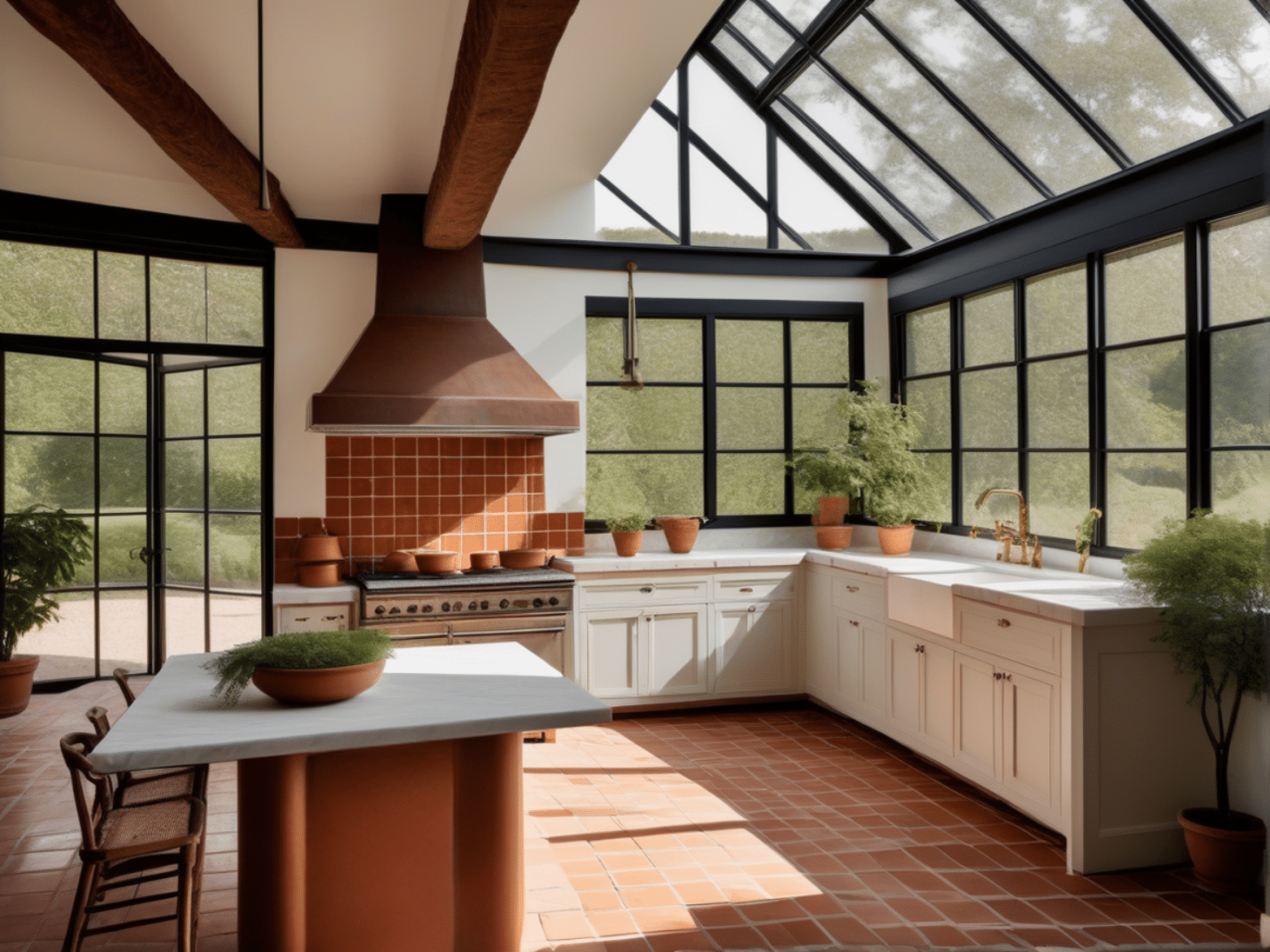A farmhouse solarium kitchen greenhouse is a unique and versatile addition to any home, merging the warmth and charm of a farmhouse kitchen with the functionality of a greenhouse. This space not only enhances your home’s aesthetic appeal but also provides a sustainable way to grow your own food year-round. Let’s explore the benefits, design considerations, and essential elements of creating a farmhouse solarium kitchen greenhouse.
Podcast Discussion: Farmhouse Solarium Kitchen Greenhouse Ideas
Farmhouse Solarium Kitchen Greenhouse Podcast Transcript
Okay. So today, we are diving into something so cool, and I’m already ready to get started. Farmhouse solarium kitchen greenhouses. Oh. Yeah.
Have you heard about these? I have heard of them. They sound amazing. You’re kinda blowing my mind right now just thinking about it. Like, picture, it’s the middle of winter.
You know, snow is maybe even falling outside. Yeah. And you’re in your cozy kitchen. Right. You know, maybe you’re making soup or something, and you need some fresh herbs.
Right. You just, like, walk a few steps and you’re in this beautiful sun drenched space attached right to your kitchen. And you can just, like, snip some fresh herbs from your own indoor garden. It’s like having a little slice of paradise right off your kitchen. It really is.
And I love that you used the word paradise Yeah. Because that’s what our sources are saying too. It’s not just about aesthetics here. It’s functional too. For sure.
We’re talking, like, year round gardening fresh produce no matter what the weather’s doing outside. Absolutely. And think about the energy savings too. Right? Oh, yeah.
That’s right. Especially with heating costs going up these days. Yeah. It’s like having your own little sun trap to help heat the house. Exactly.
And it’s using that free energy from the sun to grow your food. It’s so smart and sustainable. Yeah. Okay. And get this.
Our sources say these greenhouses can actually, like, increase your home’s value. Oh, yeah. For sure. I’ve even seen some real estate studies that suggest homes with these features can see a significant increase in value. It’s a huge selling point these days.
It makes sense, though. Right? Yeah. I mean, imagine you’re a potential buyer. You walk into a house, and there’s this bright, beautiful sunroom filled with greenery just off the kitchen.
Right. I’d be sold. It’s like its own little escape, and it just adds so much character to a home. Totally. Okay.
So we’re obviously very on board with this whole concept. Rain checkles. But let’s get into the nitty gritty. Like, what does it actually take to build one of these things? Okay.
Our sources had some really practical advice starting with location. Location is key. Yeah. They said sunlight exposure is, like, the most important thing. Absolutely.
You wanna maximize that direct sunlight, and ideally, you’d want your solarium facing south? South for the wind. Especially in the winter months when the sun is lower in the sky, you want to capture as much of that sunlight as possible. Makes sense. And I’m guessing you’d want it easily accessible from the kitchen too.
Oh, yeah. For sure. Nobody wants to be trekking through the house with muddy boots and armfuls of gardening supplies. Exactly. It’s all about that seamless flow between your cooking space and your garden.
Right. Imagine being able to just, like, pop out to your solarium to grab some fresh herbs while you’re cooking dinner. It’s so convenient. Okay. That just sold me even more.
Chuckles. So location sunlight, check. Now our source also mentioned materials and construction. Right. And they really emphasize the importance of, like, high quality insulated glass.
Yeah. That’s so important. It sounds like a splurge, but I get it. We’re not talking about some flimsy glass box here. Right?
Exactly. It’s an investment upfront, but it pays off in the long run with energy savings. So it’s like we’re creating a thermal envelope that helps regulate the temperature inside. Exactly. And that means you’re relying less on your heating and cooling system, which saves you money, and it’s better for the environment.
It’s a win win. And speaking of things that are built to last, our source also stressed the need for a super sturdy structure. Right. Like, it needs to be able to handle whatever the elements throw at it. Yeah.
For sure. We’re talking wind, rain, even snow, depending on where you live. You need that peace of mind knowing your beautiful solarium is built to last. Absolutely. Yeah.
So that might mean things like reinforced framing, durable roofing materials Mhmm. Proper ventilation. Right. Ventilation is key for regulating the temperature and humidity inside the solarium. It’s all about creating that perfect balance.
Absolutely. Okay. So we’ve got the foundation. We’ve got the sunlight. Mhmm.
We’ve got a structure that’s not gonna blow over in the first breeze. Right. Now for the really fun stuff Mhmm. What does a farmhouse solarium kitchen greenhouse actually look like on the inside? That’s so cool.
Our source had some great ideas starting with the planting and gardening side of things. They mentioned things like raised beds and containers, which I love because it makes everything super accessible. Oh, yeah. For sure. Whether you’re, like, a seasoned gardener or a total beginner like me.
Absolutely. And they’re great for drainage too. Oh, that’s good to know because I tend to overwater. Chuckles. Don’t worry.
We’ve all been there. And they mentioned something called drip irrigation systems. Have you heard of these? Oh, yeah. Drip drip irrigation is amazing.
It’s like having a personal watering system for each plant. It delivers water directly to the roots, which minimizes waste and ensures your plants are getting a consistent supply of moisture. That’s so smart. You can even set them on a timer, so it’s super low maintenance. Oh my gosh.
This is dangerous information for someone like me who loves the idea of a garden, but not necessarily the upkeep. Right. I might just end up living in there. It’s easy to get carried away. It’s such a beautiful and inviting space.
Speaking of inviting spaces Yeah. How does that whole kitchen integration really work? That’s where it gets really fun. Right. Just imagine you’re whipping up some dinner, and you realize you need some fresh basil for your pasta sauce.
Okay. Instead of running to the grocery store, you simply step into your solarium and pluck some fresh basil leaves right from your own plant. Okay. That’s a game changer. Chuckles.
The aroma, the freshness, it just elevates the entire cooking experience. I can only imagine. It’s incredible. Okay. I’m getting a little carried away here.
Yeah. But we do need to talk about the practicalities of maintaining a space like this. Right. And one thing that stood out in our research was the importance of climate control. Absolutely.
And not just for the plants, but for us humans too. Mhmm. So we’re talking about things like supplemental heating for those chilly mornings cooling systems to combat the summer heat. Right. And this is a big one, humidity control.
Yes. Humidity control is so important for both the plants and for your own comfort. Because nobody wants to be hanging out in a greenhouse that feels like a sauna. Exactly. You wanna create a space that’s comfortable and inviting year round, and that means finding that perfect balance of temperature and humidity.
It’s all about creating a little slice of paradise. Remember? Precisely a paradise that’s optimized for both you and your plants. I love it. But is this really achievable for those of us who don’t exactly have green thumbs?
That’s a great question. Because I’m definitely more of a plant enthusiast than an expert gardener. I hear you. So our sources dove into some tips for maximizing the use of our solarium kitchens, and one of the strategies they highlighted was seasonal planting. Oh, yes.
Seasonal planting is key. What does that look like in a solarium kitchen setting, though? Well, think of it like rotating your crops to take advantage of each season. Okay. So for example, in the cooler months, you could plant things like spinach lettuce, maybe some herbs that thrive in those temperatures.
Right. And then as the weather warms up, you can switch to more sun loving plants like tomatoes, peppers, cucumbers, things like that. It’s like having your own little farm to table operation right in your kitchen. Exactly. And it’s a great way to keep things interesting year round, always having something new and delicious to harvest.
I love that. Okay. And our source also mentioned this really intriguing concept called companion planting. Oh, yes. Companion planting is so cool.
I’m intrigued, but I’ll admit I’m not entirely sure what it is. So, basically, it’s the practice of strategically planting different species together that benefit each other. Okay. So for example, planting basil alongside your tomatoes can actually enhance the flavor of the tomatoes. Toda.
I know it’s amazing. And it can also help deter certain pests. So it’s like you’re creating a whole little ecosystem in there. Exactly. You’re working with nature to create a balanced and thriving environment.
See, I was a little intimidated by the idea of maintaining a whole indoor garden. But the more we talk about it, the more I’m realizing it’s not just about having a green thumb. It’s about understanding these cool little strategies and working with nature. You got it. It’s fascination.
It really is. And it’s so rewarding to see everything flourishing together in harmony. Absolutely. Okay. So we’ve covered location construction planting now.
Let’s talk about the maintenance aspect. Because let’s be real, even the most low maintenance garden requires some upkeep. Right. Every garden needs a little TLC. Exactly.
So what are some of the key things people should be thinking about when it comes to maintaining their farmhouse solarium kitchen greenhouse? Well, 1st and foremost, you wanna make sure those gorgeous glass panes are kept clean. Oh, yeah. That’s important for maximizing that sunlight. Exactly.
You wanna let in as much of that natural light as possible. And then, of course, you’ll need to stay on top of your regular gardening tasks like watering, fertilizing, pruning. Right. And it’s always a good idea to do a regular check of the structure itself Okay. Just to make sure everything is still sound and secure.
So, like, checking for any leaks, cracks, things like that. Exactly. A little bit of preventative maintenance can go a long way in ensuring your solarium stays in tip top shape for years to come. It’s like anything else we value. Mhmm.
Right? A little bit of care and attention goes a long way. We’ve talked a lot about the practicalities of these greenhouses, but I think it’s important to acknowledge the sheer delight they can bring. Oh, absolutely. Imagine stepping into your sun drenched solarium on a chilly winter morning.
The air is filled with the scent of fresh herbs, and maybe some flowers are blooming. It sounds magical. It truly is. It’s like having your own little slice of heaven right off your kitchen. It’s like a little escape from the everyday hustle and bustle.
Exactly. It’s a place where you can connect with nature, relax, and recharge. You know, when we first started this deep dive, I saw this as more of a fun concept, but maybe a little out of reach for the average person. I hear you. But hearing you describe it, the practicality of it blended with the beauty, it’s really shifted my perspective.
I’m glad to hear that. It’s not just a greenhouse. It’s an experience. Exactly. It’s about creating a space that’s uniquely yours, a reflection of your passions and your connection to the natural world.
It’s about bringing a touch of the outdoors into the heart of our homes. Precisely. Yeah. And in today’s world, I think that connection to nature is more important than ever. I completely agree.
It’s about finding those moments of peace and tranquility amidst the chaos, and a farmhouse solarium kitchen greenhouse offers exactly that. It’s a sanctuary, a place to nourish both body and soul. Beautifully said. I couldn’t agree more. And it’s a concept that I’m starting to think might be a lot more attainable than I initially thought.
I think so too. You know, at first, when we were talking about it, I was picturing, like, these elaborate structures that would cost a fortune to build. Right. But it doesn’t have to be like that at all. Not at all.
It can be as simple or as grand as you want it to be. Exactly. It’s all about working with what you have and what makes sense for your home and your budget. And your lifestyle too. Absolutely.
Okay. So we’ve talked about the practical side of things, but I think it’s important to acknowledge the sheer delight that these solarium kitchens can bring. Oh, for sure. Just imagine, like, it’s a cold winter day Mhmm. But you step into your solarium, and it’s warm and sunny.
Right. The air is filled with the scent of fresh herbs. I love Maybe there’s even, like, a little seating area where you can enjoy your morning coffee surrounded by your plants. Oh, that sounds amazing. It’s like having your own little slice of heaven.
Right? It really is. A little escape from the everyday hustle and bustle. Exactly. A place where you can connect with nature, relax, and recharge.
I love that idea so much. It’s really special. You know, at first, when we started this deep dive Yeah. I saw this as a fun concept, but maybe a little bit out of reach for the average person. I hear you.
But hearing you describe it Mhmm. The practicality of it blended with the beauty of it all, it’s really kinda shifted my perspective. I’m so glad. It’s not just a greenhouse. It’s an experience.
Exactly. It’s about creating a space that’s uniquely yours. Right. A reflection of your own personal style and your culinary passions. And your connection to the natural world.
Precisely. Because, ultimately, that’s what it’s all about. Right? Absolutely. It’s about bringing a touch of the outdoors into the heart of our homes.
And in today’s world Yeah. I think that connection to nature is more important than ever. I completely agree. It’s about finding those moments of peace and tranquility amidst the chaos of everyday life. Yes.
And a farmhouse solarium kitchen greenhouse offers exactly that. It’s a sanctuary. It is. A place to nourish both body and soul. Beautifully said.
I couldn’t agree more. It really is. And, you know, it’s funny because when we first started talking about farmhouse solarium kitchen greenhouses, I have to admit it seemed like a lovely daydream. Yeah. But maybe not entirely attainable.
You know? Right. But hearing you break it down Mhmm. The design aspects, the sustainability factor, the sheer joy of it all Yay. It’s really shifted my perspective.
Good. I’m glad. It’s not just a greenhouse. It’s an experience. It is.
It’s about, you know, redefining our relationship with nature and bringing that touch of the outdoors into our homes like you were saying. Absolutely. And it’s about, you know, creating a space that nourishes the body and soul. Yes. Yes.
A place where we can connect with nature, indulge our green thumbs, and just savor, like, the simple pleasures of homegrown goodness. Imagine that it’s a blustery winter day. You know, the wind is howling outside. Oh, yeah. But inside your the air is warm and fragrant sunlight streams through the glass illuminating your thriving garden.
Okay. Stop. You’re making me wanna move in right now. And you can just reach out and plop a few sprigs of rosemary for your roast chicken. Oh my gosh.
The aroma just fills the air. It sounds so idyllic. It really is. And you know what? This has been such an eye opening deep dive.
It has been fun. Who knew something so charming could also be so practical and rewarding? It’s a great combination. It really is. Well, I am feeling very inspired.
Good. I might need to go do a little research on my own, maybe sketch out some preliminary greenhouse plans. I love it. I have a feeling I’m not alone after this episode. I hope not.
I think we might just spark a whole wave of farmhouse solarium kitchen greenhouse conversions across the country. That would be amazing. And you know what? I am here for it. We would love to hear what you think about this unique concept.
Let us know. Are you ready to ditch the supermarket produce aisle and embrace the magic of a solarium kitchen? It’s a great question. Until next time. Happy gardening, everyone.


Benefits of a Farmhouse Solarium Kitchen Greenhouse
- Year-Round Gardening: A solarium kitchen greenhouse allows you to grow vegetables, herbs, and flowers throughout the year, regardless of the weather outside. This is particularly beneficial for those living in areas with harsh winters.
- Energy Efficiency: By utilizing natural sunlight, a solarium can help reduce energy costs. The glass structure captures solar heat, which can be used to warm the adjacent rooms in your home during colder months.
- Enhanced Home Value: Adding a solarium kitchen greenhouse can increase the value of your home by providing additional living space that is both functional and aesthetically pleasing.
- Improved Health and Well-being: Exposure to natural light has been shown to improve mood and overall well-being. A solarium offers a bright, inviting space that can serve as a sanctuary for relaxation and rejuvenation.
Design Considerations
When designing a farmhouse solarium kitchen greenhouse, several factors need to be considered to ensure the space is both functional and beautiful.
Location and Orientation
- Sunlight Exposure: Choose a location with maximum sunlight exposure, ideally facing south, to ensure your plants receive adequate light throughout the day.
- Accessibility: The solarium should be easily accessible from the main living areas, such as the kitchen or dining room, to facilitate seamless integration into daily routines.
Materials and Construction
- Glass Quality: Use high-quality, insulated glass to maintain temperature control and reduce energy costs. Consider using low-emissivity (Low-E) glass to minimize heat loss during winter.
- Structural Support: Ensure the structure is built to withstand local weather conditions, including snow loads and high winds. Use durable materials like aluminum or steel for the frame.
Interior Design
- Flooring: Opt for moisture-resistant flooring materials, such as tile or sealed concrete, to withstand the humidity levels typical in a greenhouse environment.
- Ventilation: Incorporate windows or vents that can be opened to regulate temperature and humidity levels, preventing overheating during summer months.

Essential Elements of a Farmhouse Solarium Kitchen Greenhouse
Planting and Gardening
- Raised Beds and Containers: Use raised beds or containers to organize your plants and make gardening more accessible. This setup also helps with drainage and soil management.
- Irrigation System: Install a drip irrigation system to ensure consistent watering and reduce manual labor.
- Soil and Fertilization: Use high-quality soil and organic fertilizers to promote healthy plant growth. Conduct regular soil tests to monitor nutrient levels and pH balance.
Kitchen Integration
- Herb and Vegetable Garden: Designate a section of the solarium for growing herbs and vegetables that can be used in your kitchen, such as basil, tomatoes, and leafy greens.
- Cooking and Dining Area: Incorporate a small cooking or dining area within the solarium to create a seamless transition between gardening and meal preparation.
Climate Control
- Heating and Cooling: Install a heating system, such as a radiant floor or wall-mounted heater, to maintain optimal temperatures during winter. Use shades or blinds to prevent overheating in summer.
- Humidity Control: Use a humidifier or dehumidifier to maintain appropriate humidity levels for both plant growth and human comfort.
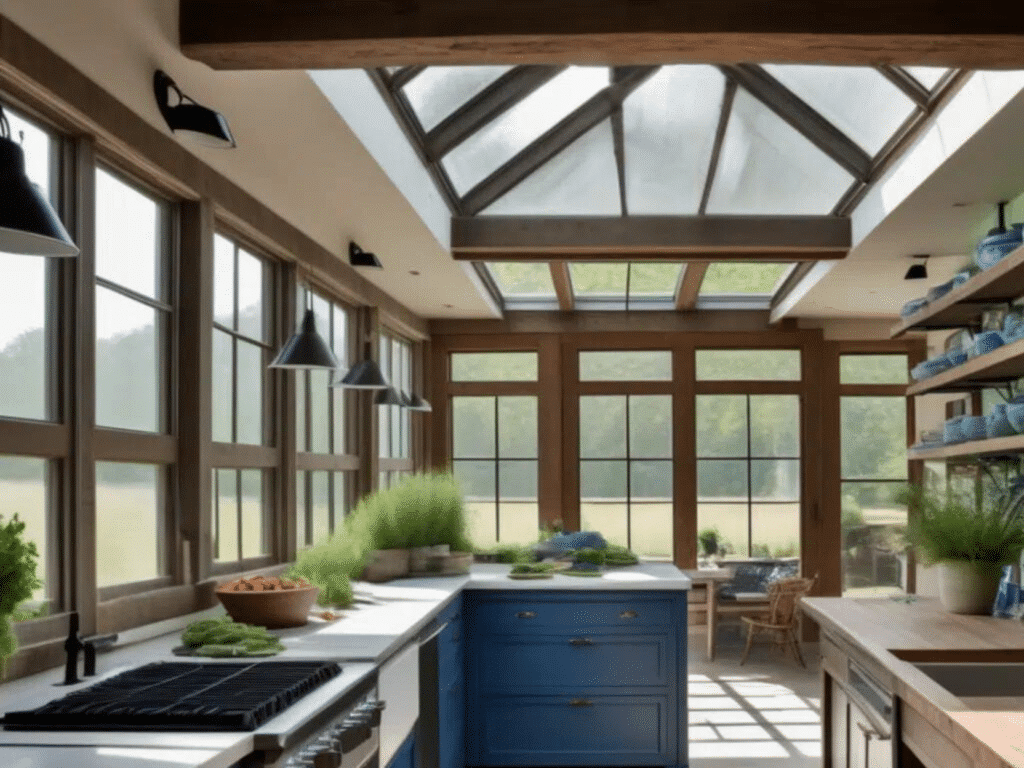
Maximizing the Use of Your Solarium Kitchen Greenhouse
To make the most of your farmhouse solarium kitchen greenhouse, consider the following tips:
- Seasonal Planting: Plan your planting schedule according to the seasons, rotating crops to maximize yield and maintain soil health.
- Companion Planting: Use companion planting techniques to enhance plant growth and deter pests naturally.
- Regular Maintenance: Keep the glass clean and inspect the structure regularly to ensure it remains in good condition and functions efficiently.

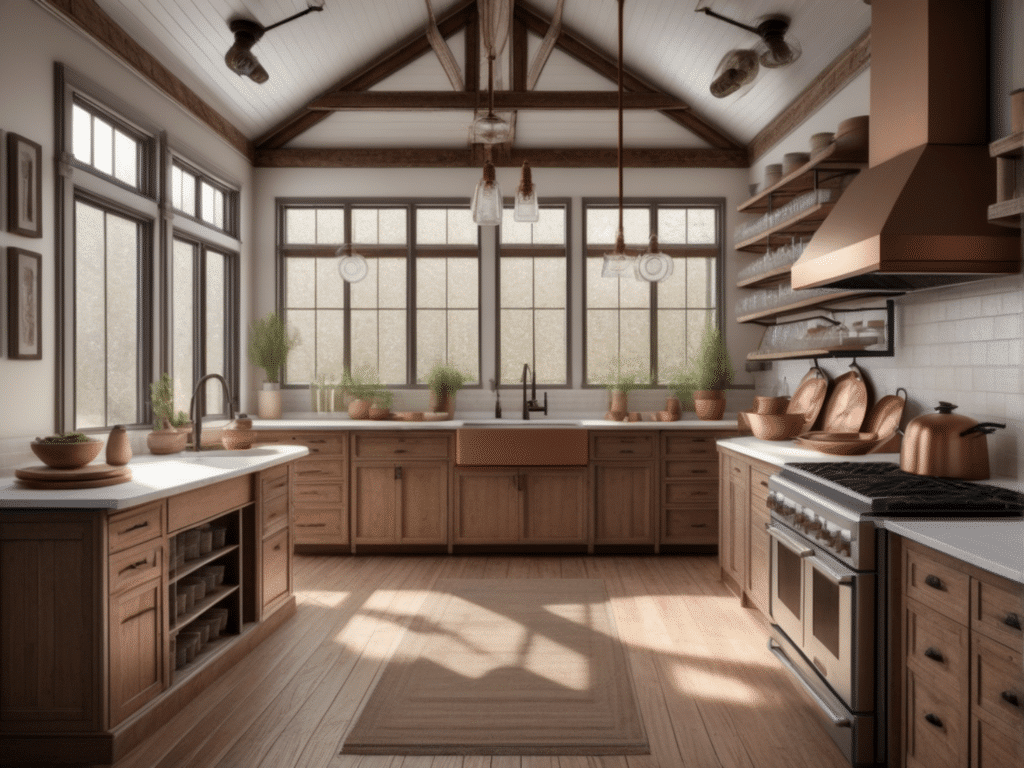
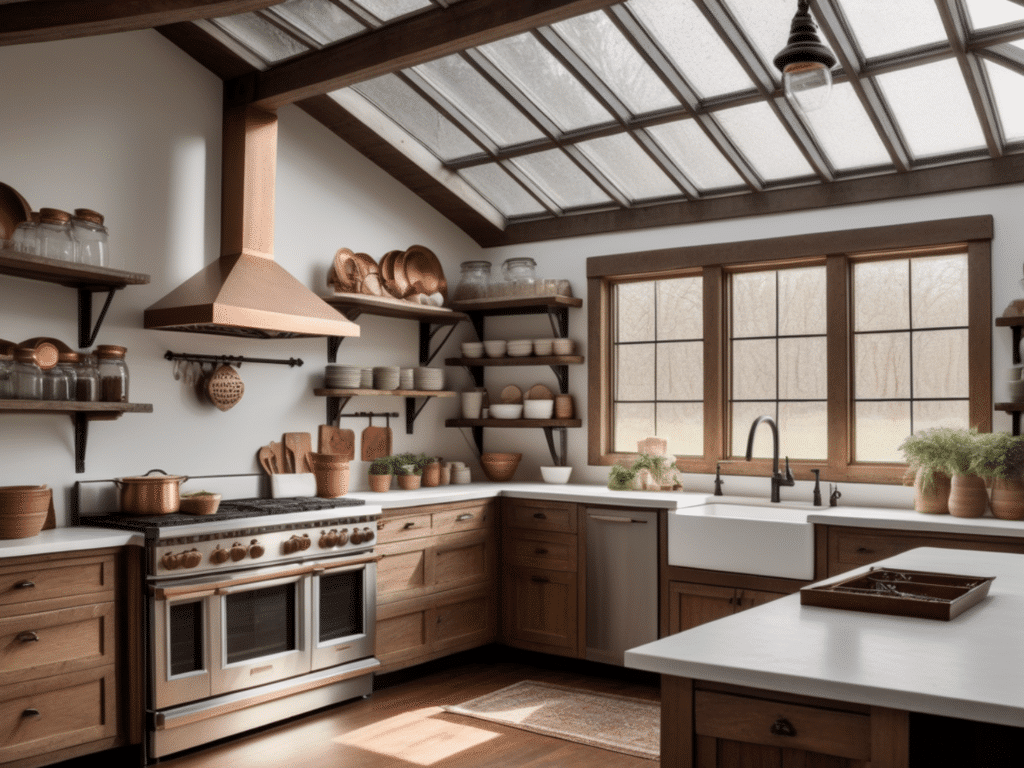

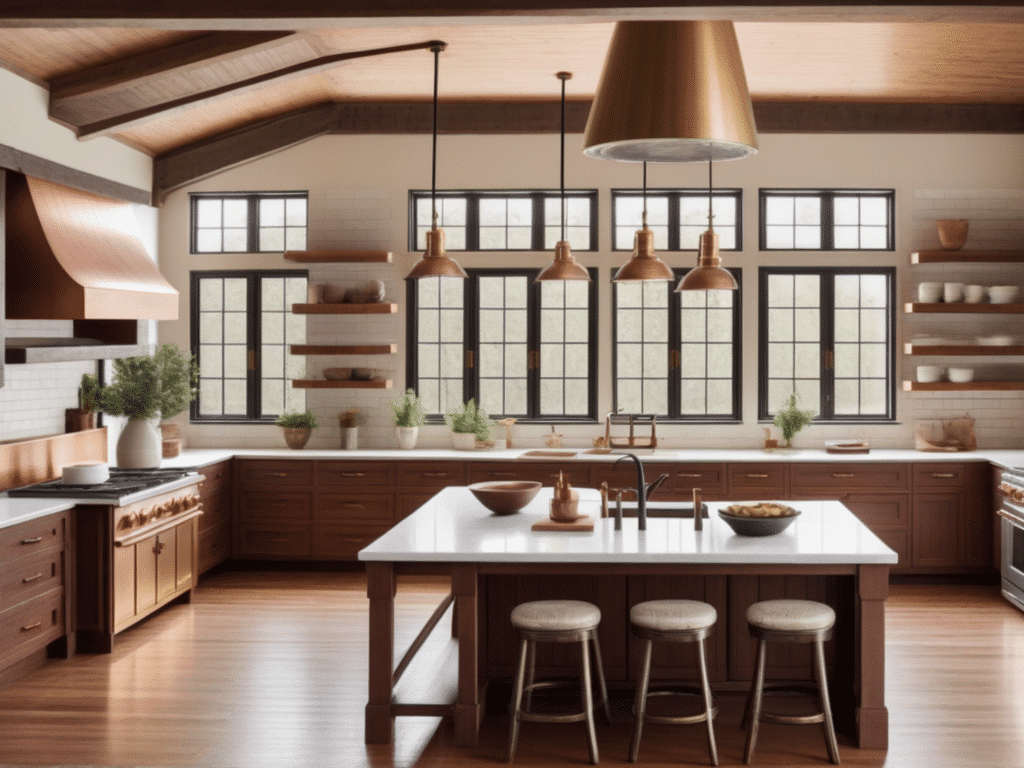
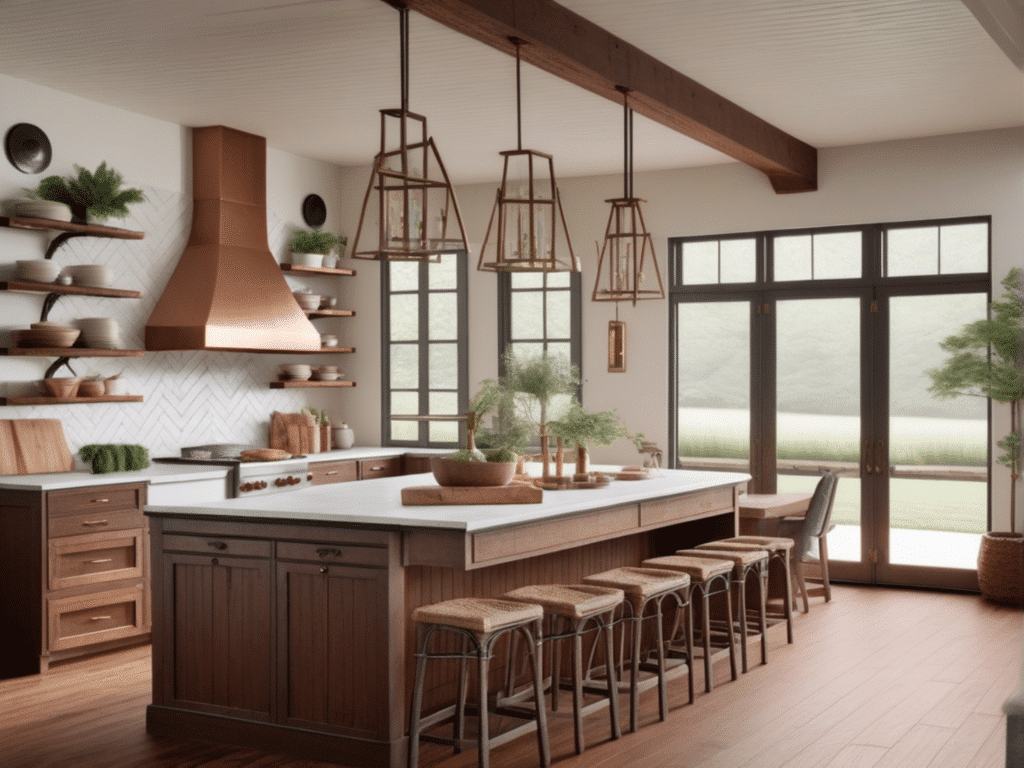
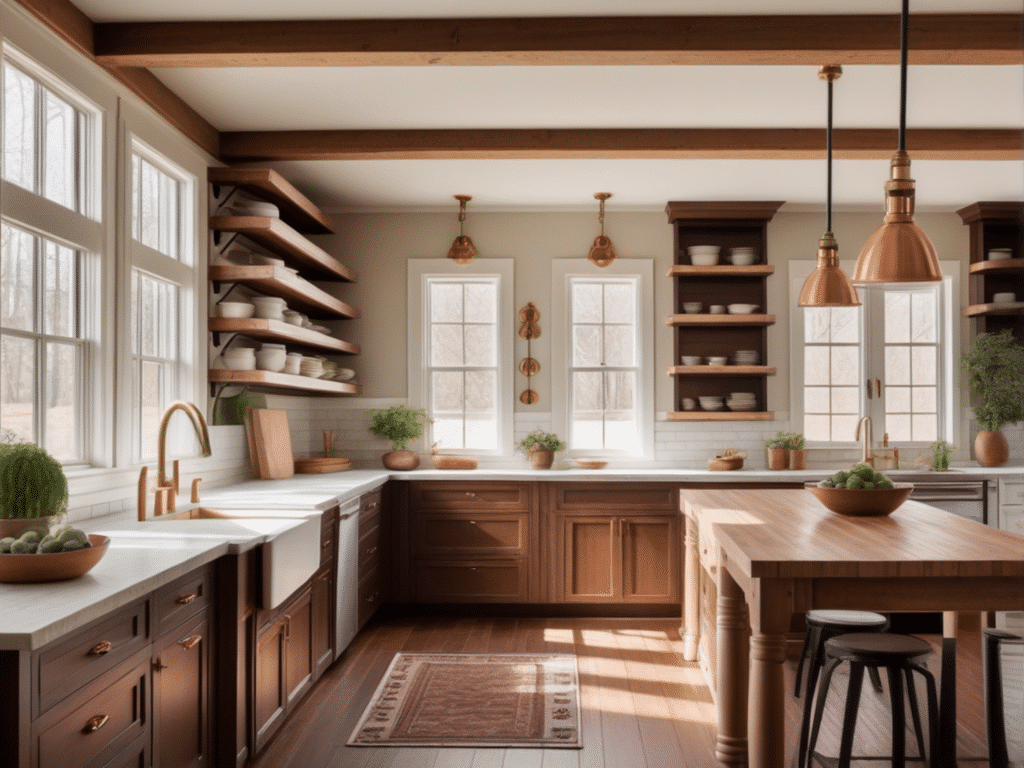

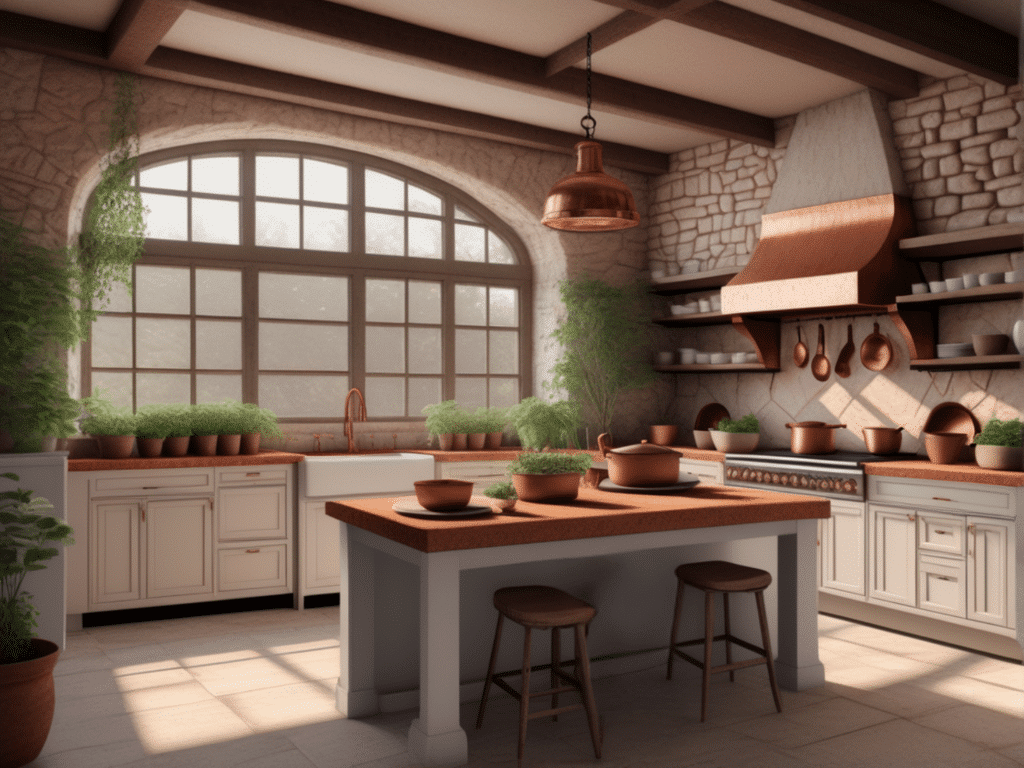
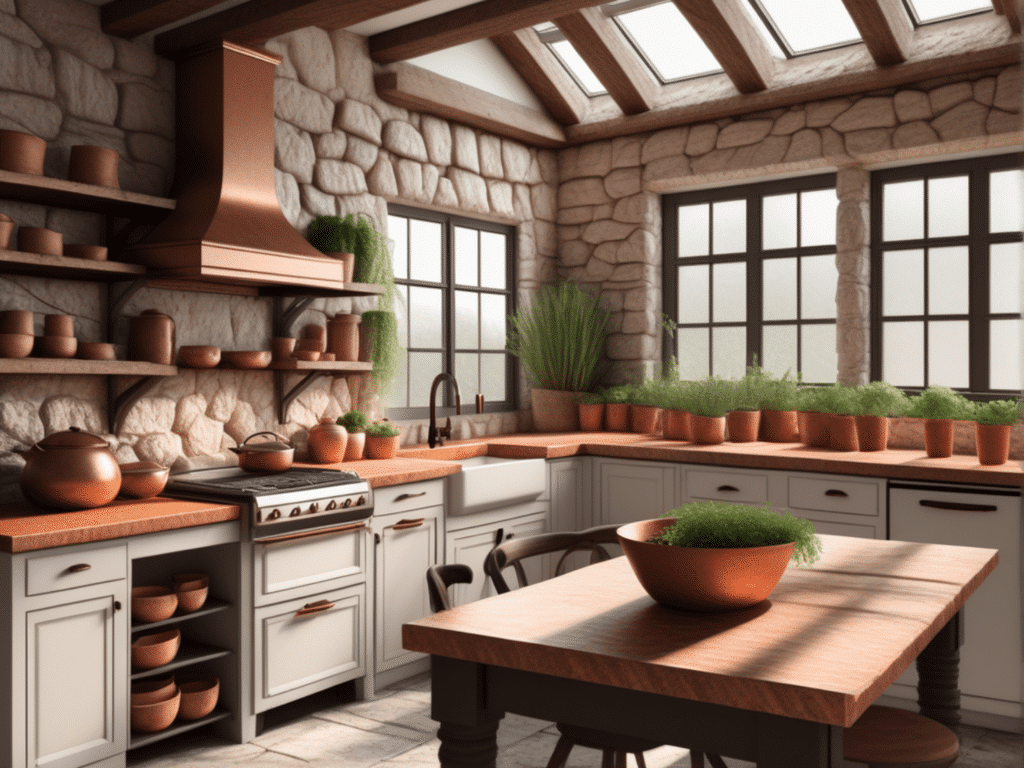
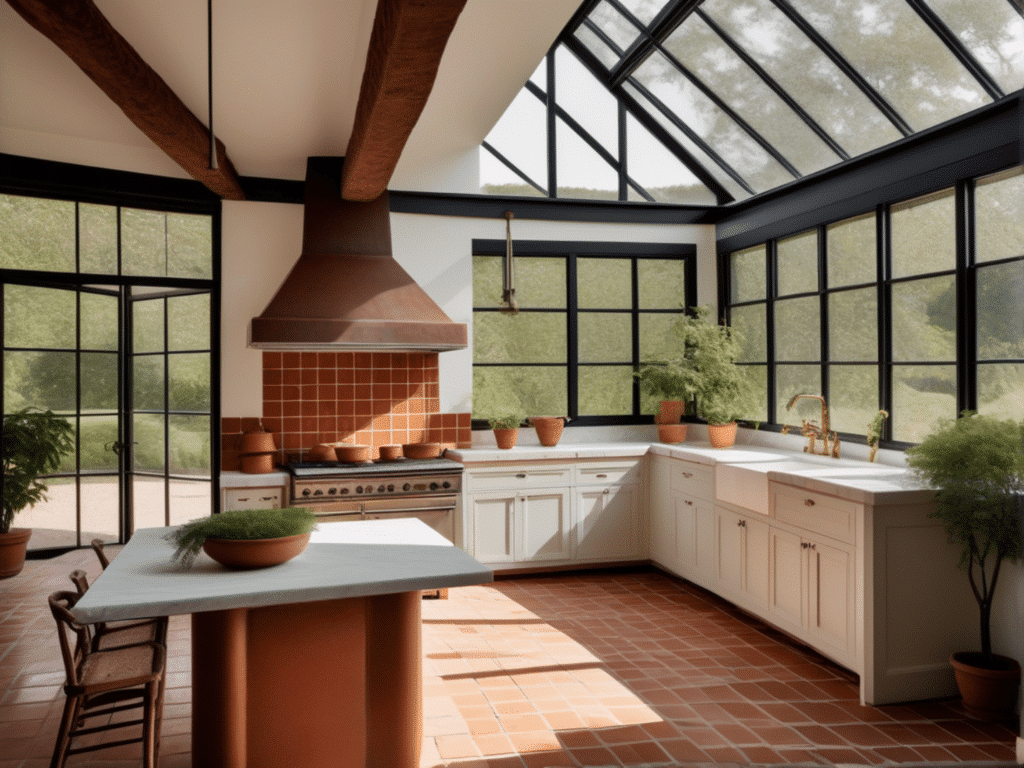


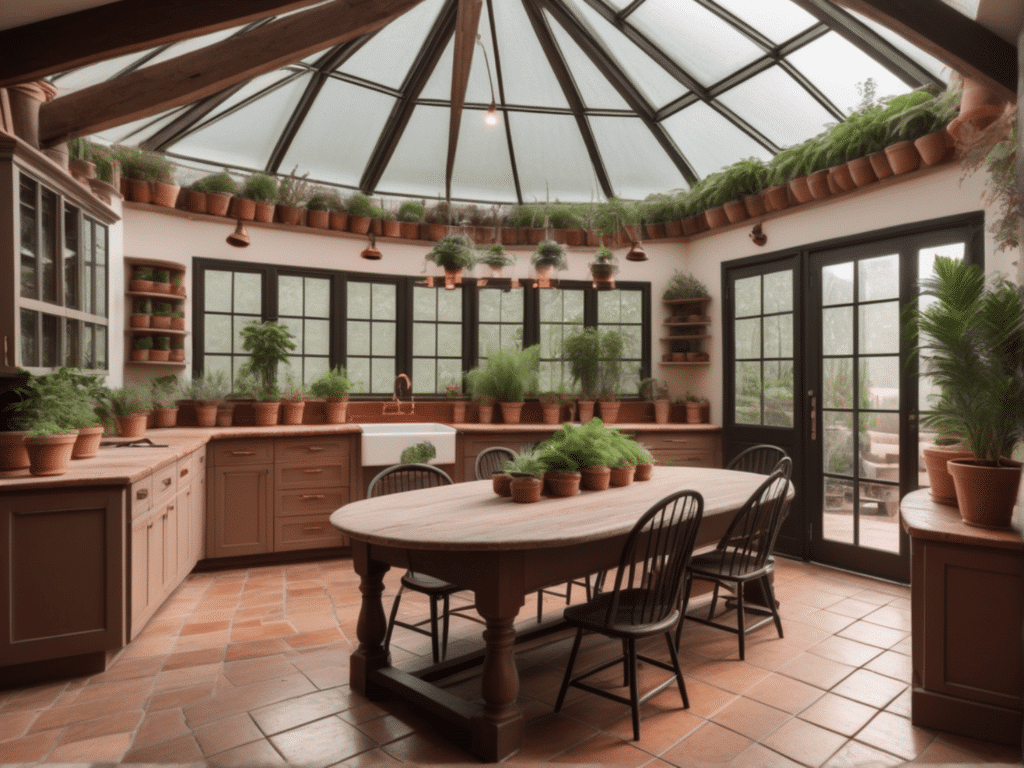
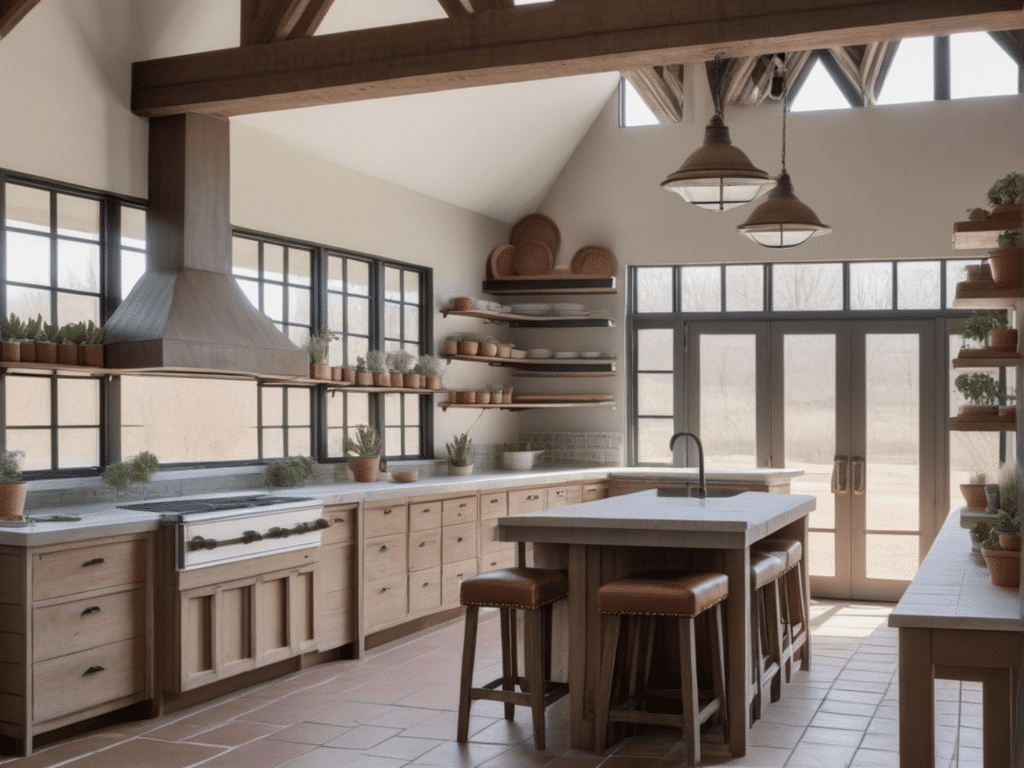

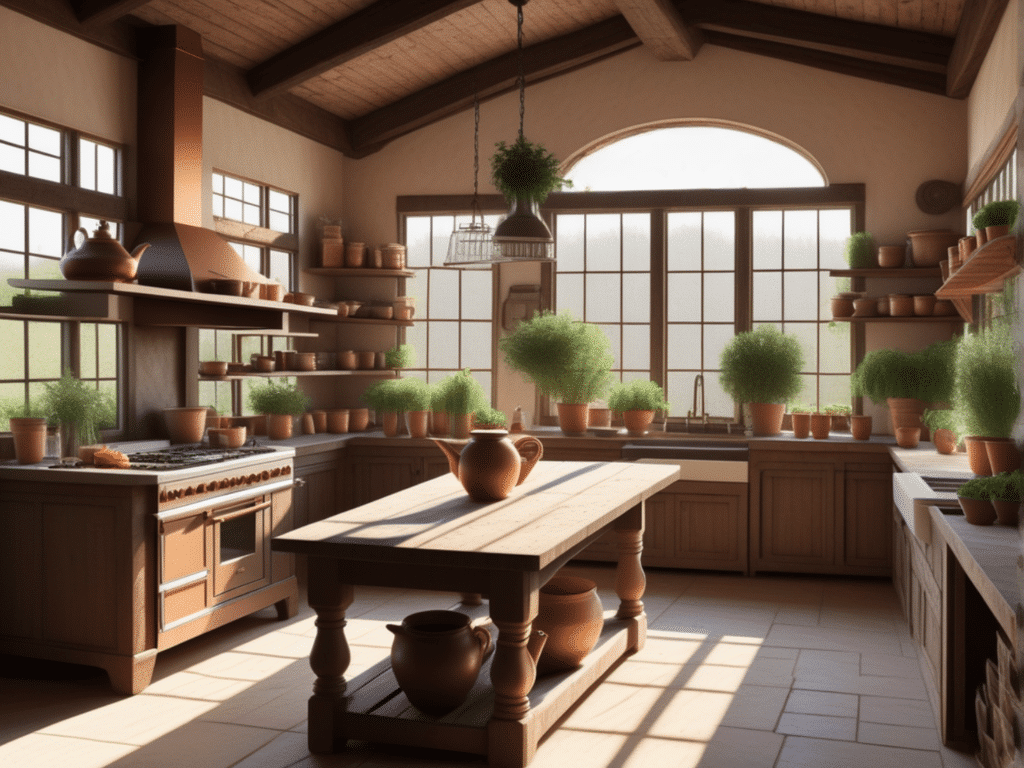
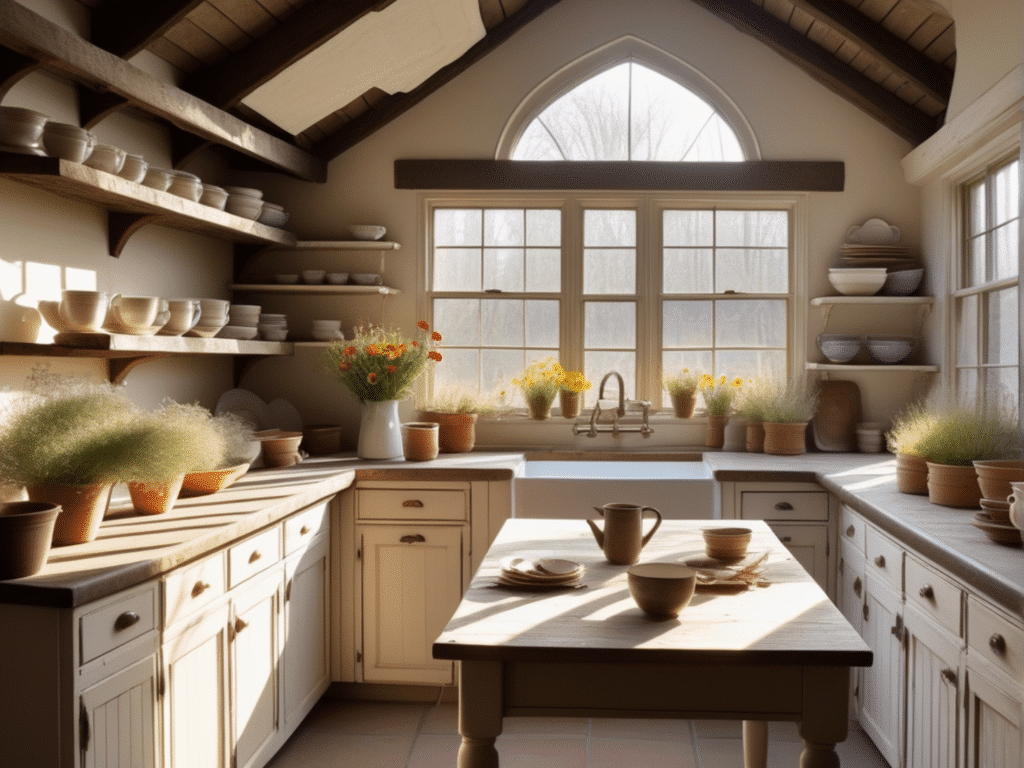
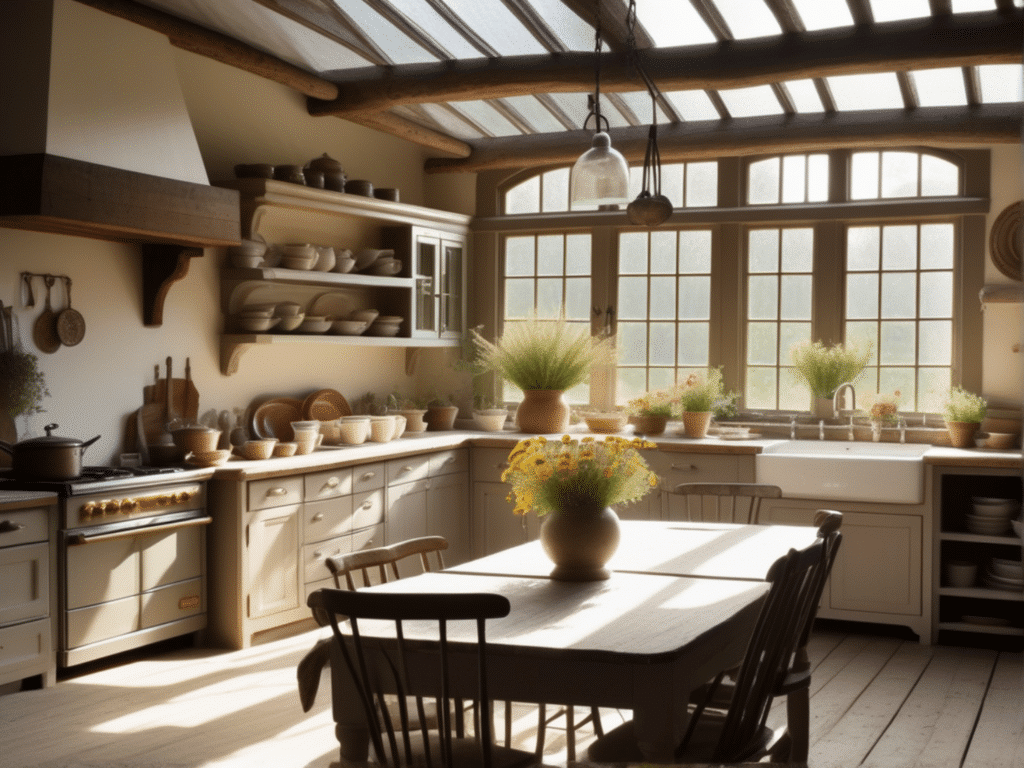

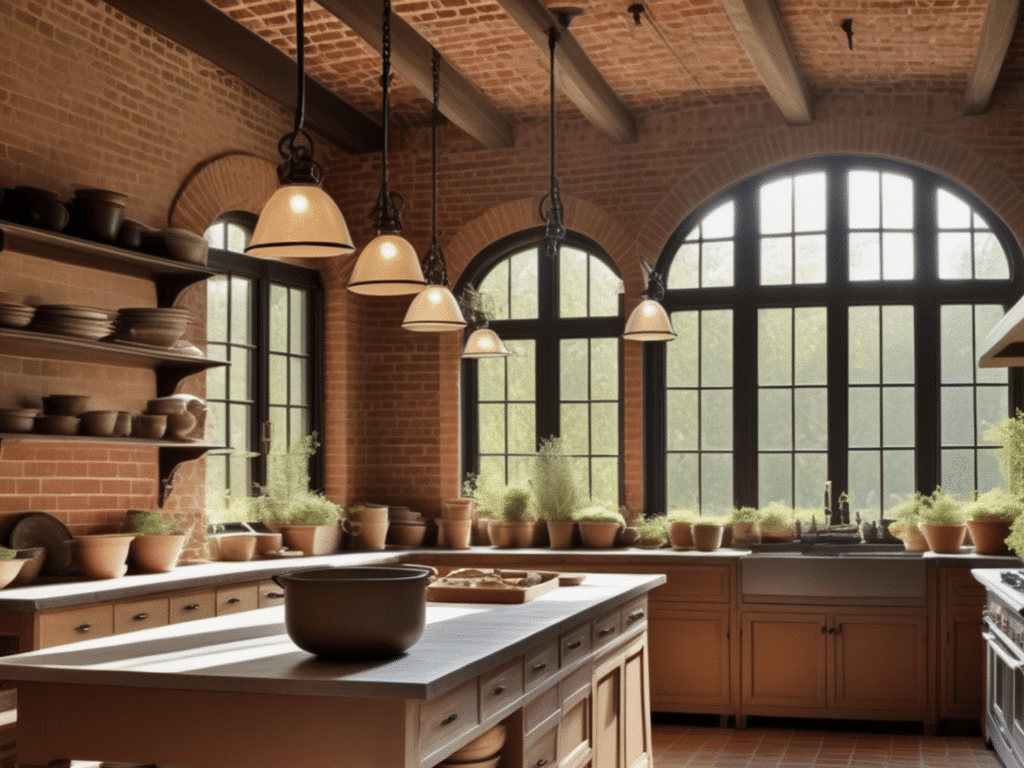


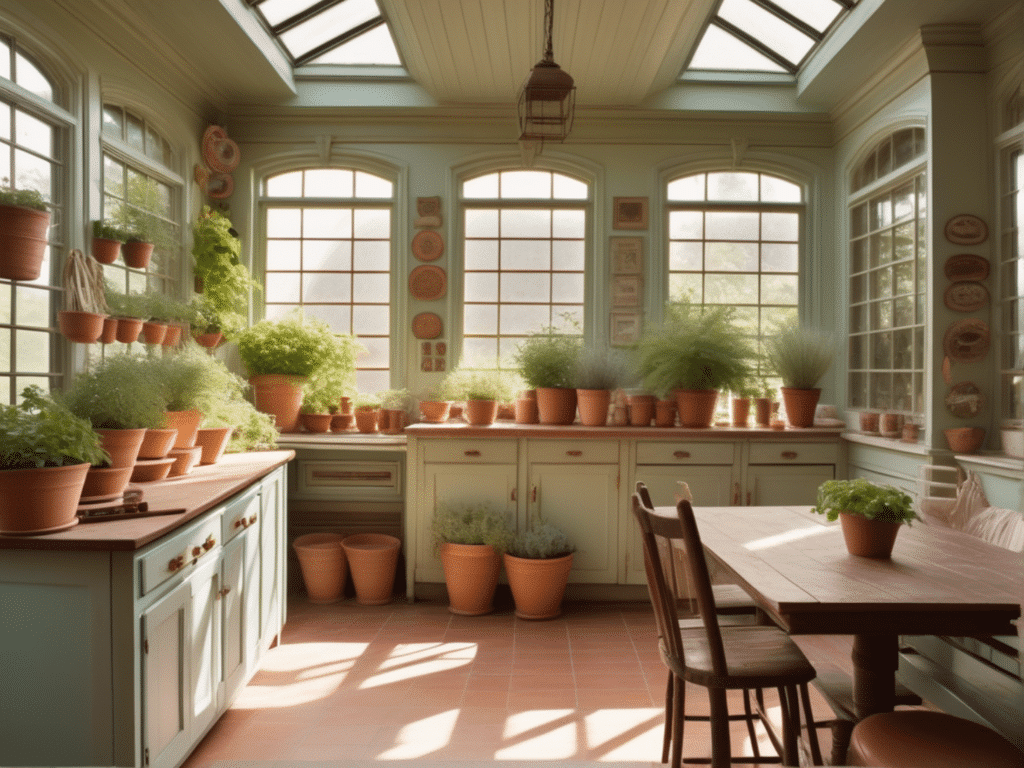
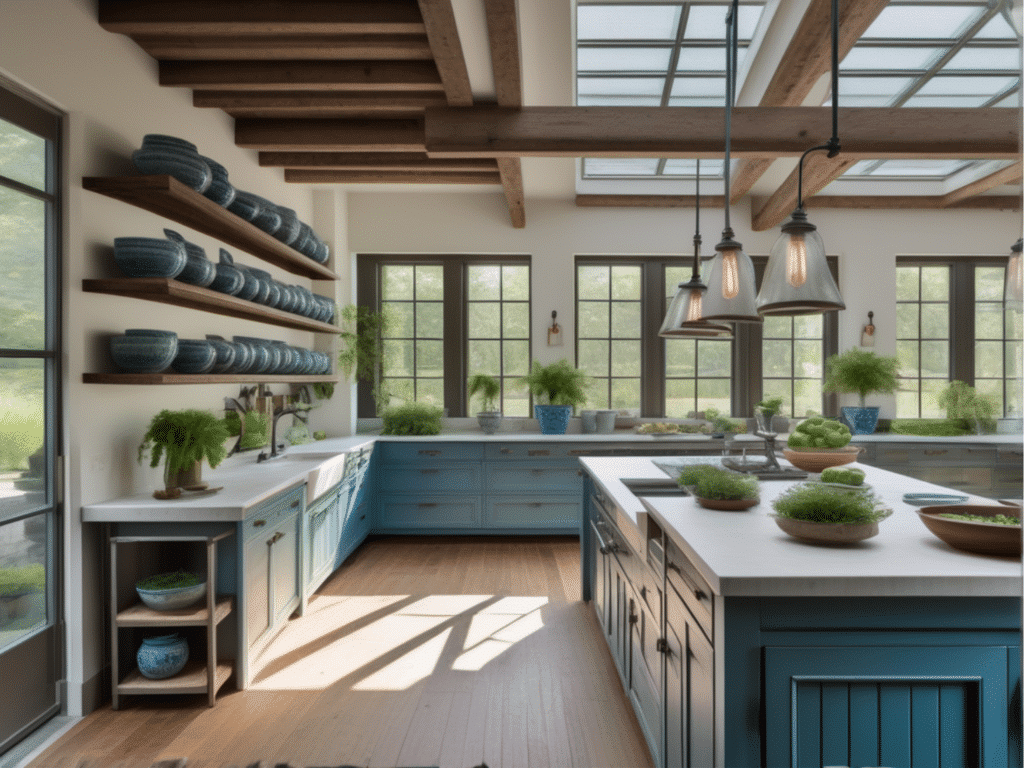
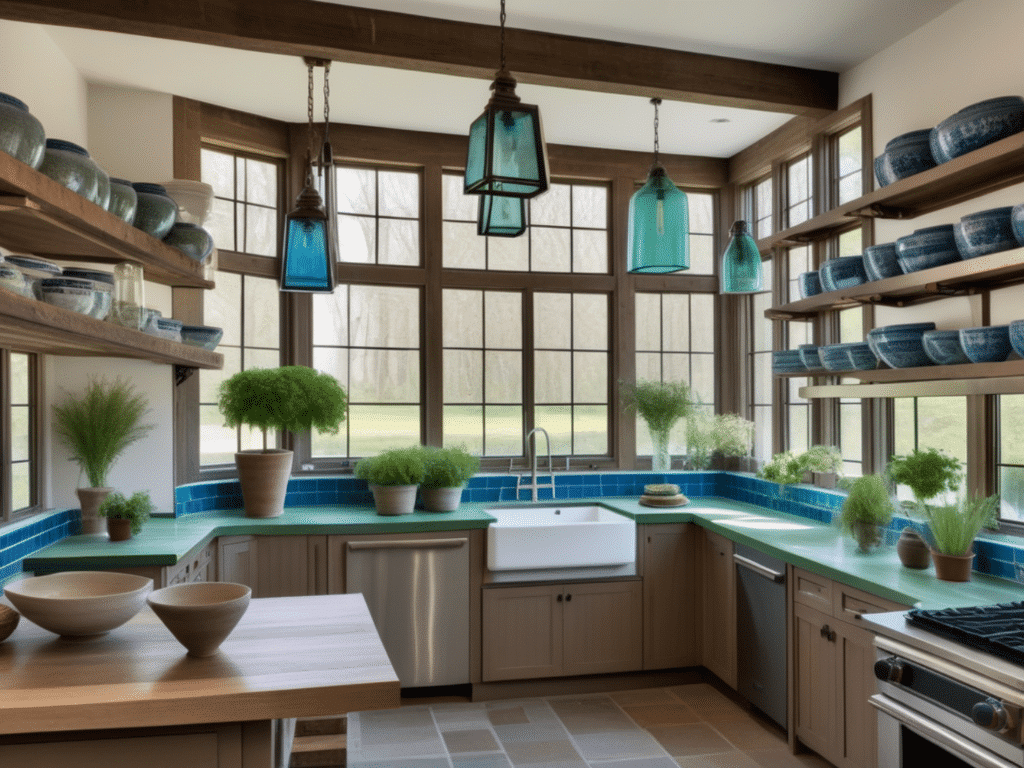
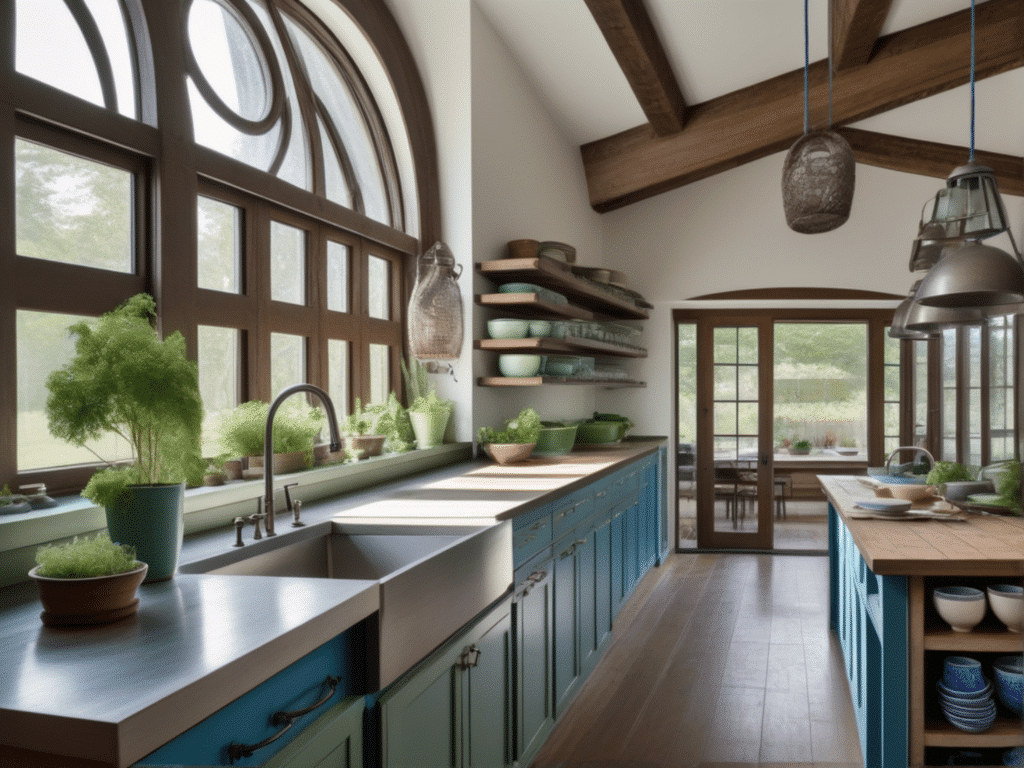
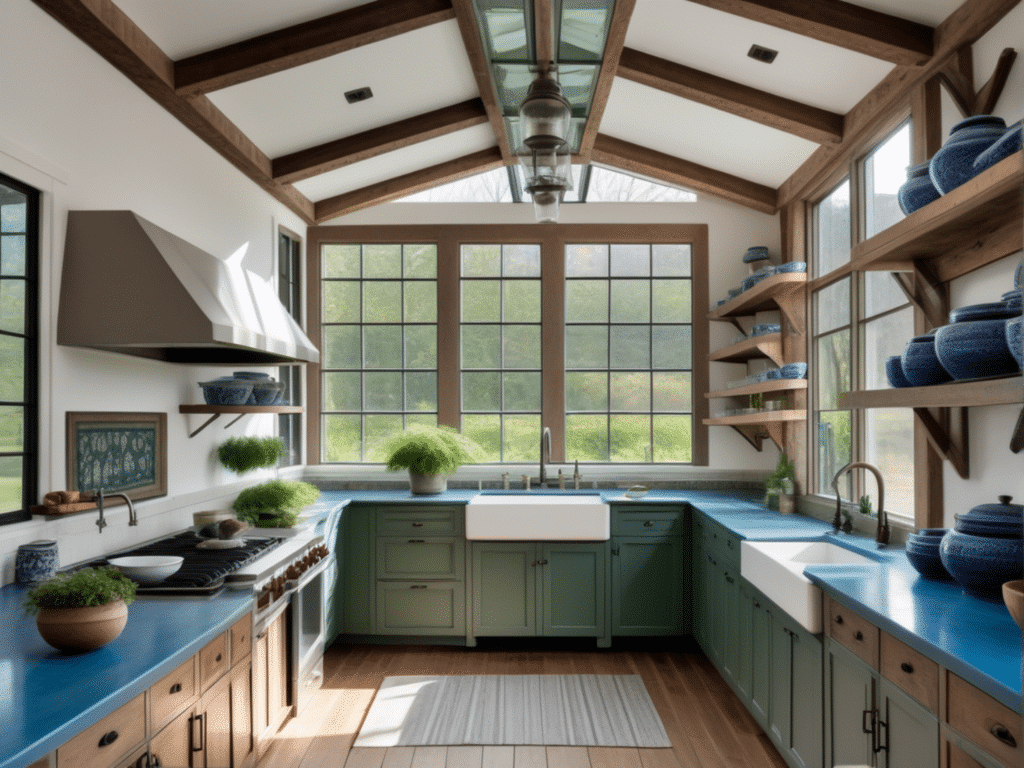
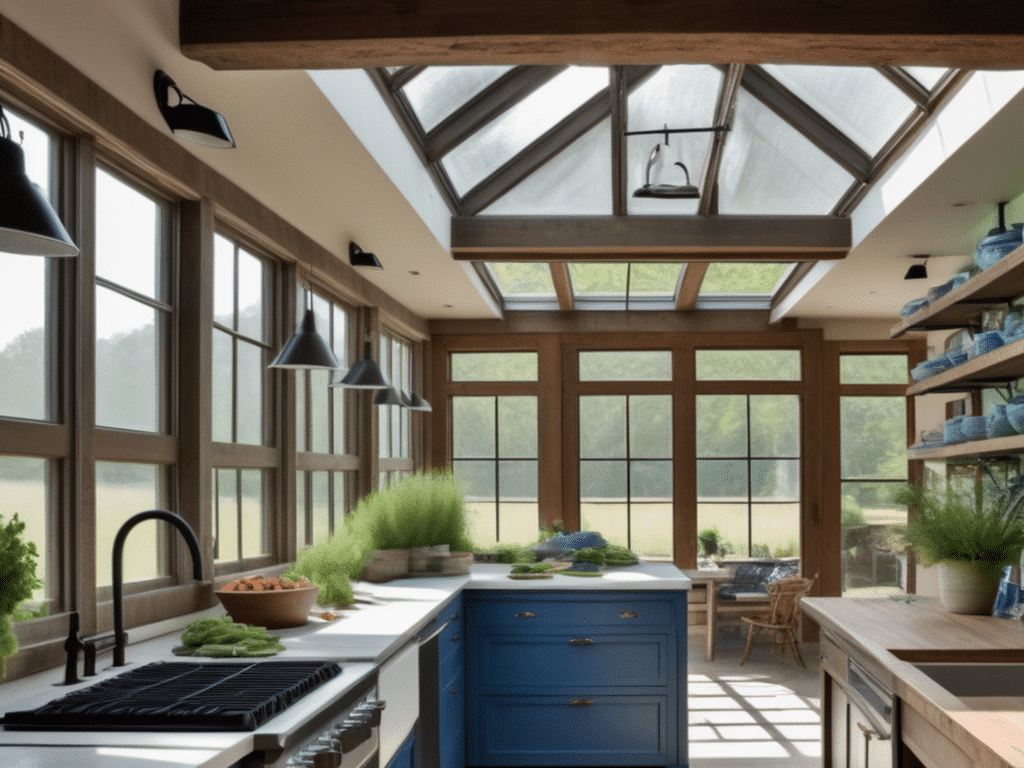
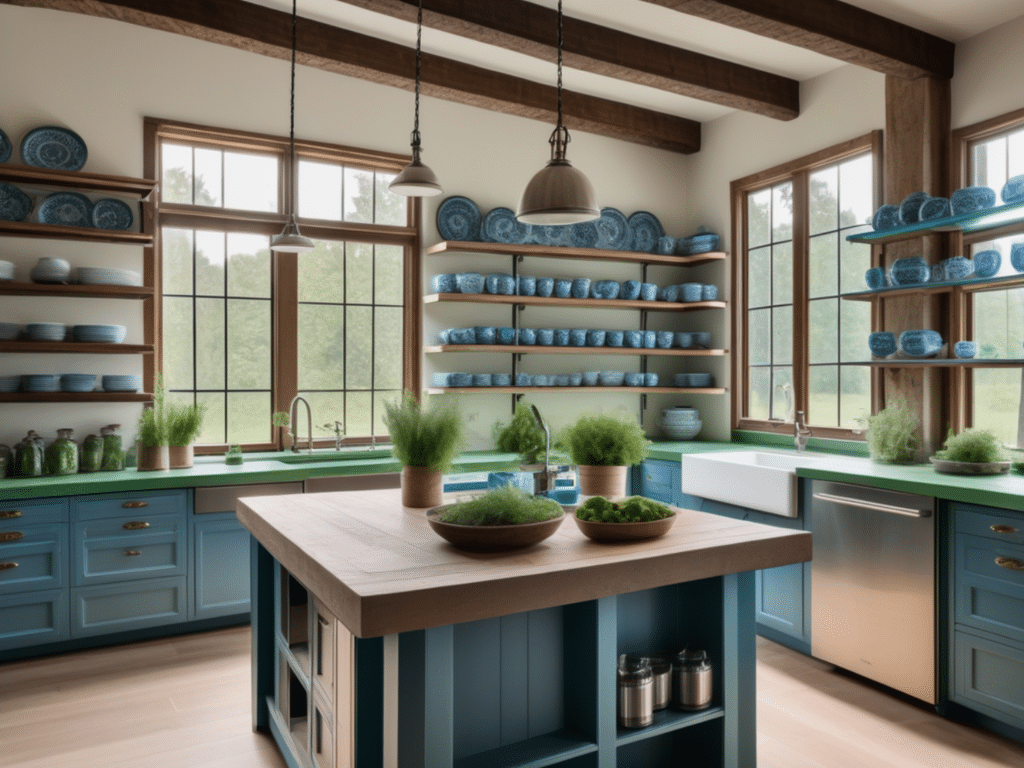


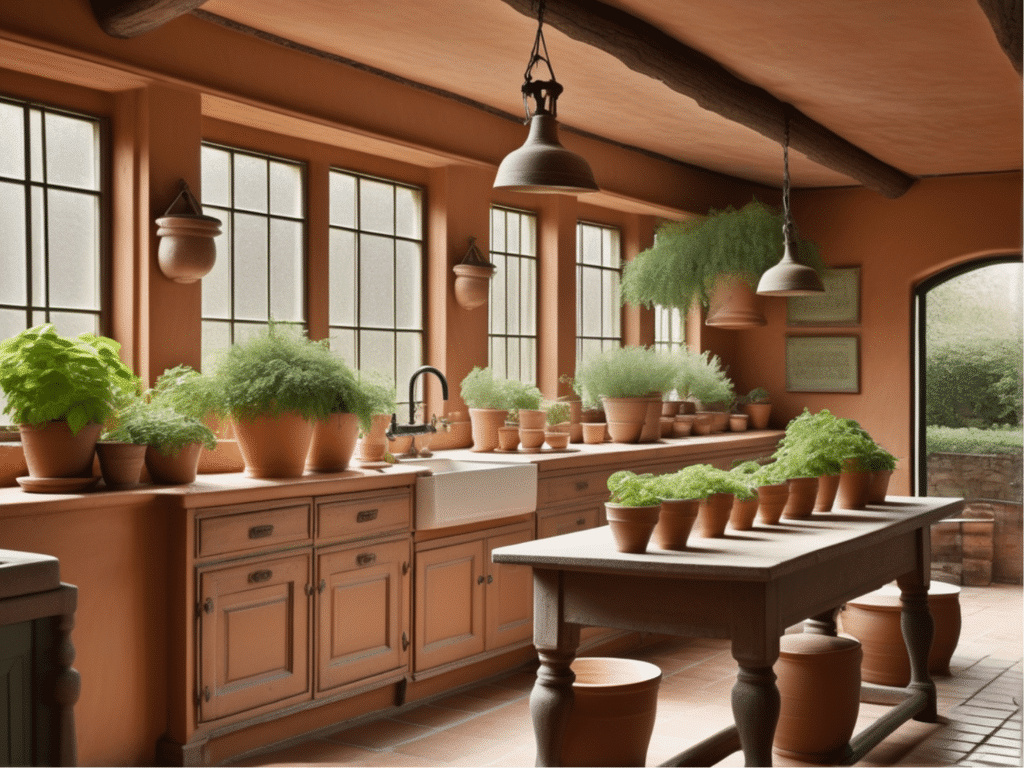
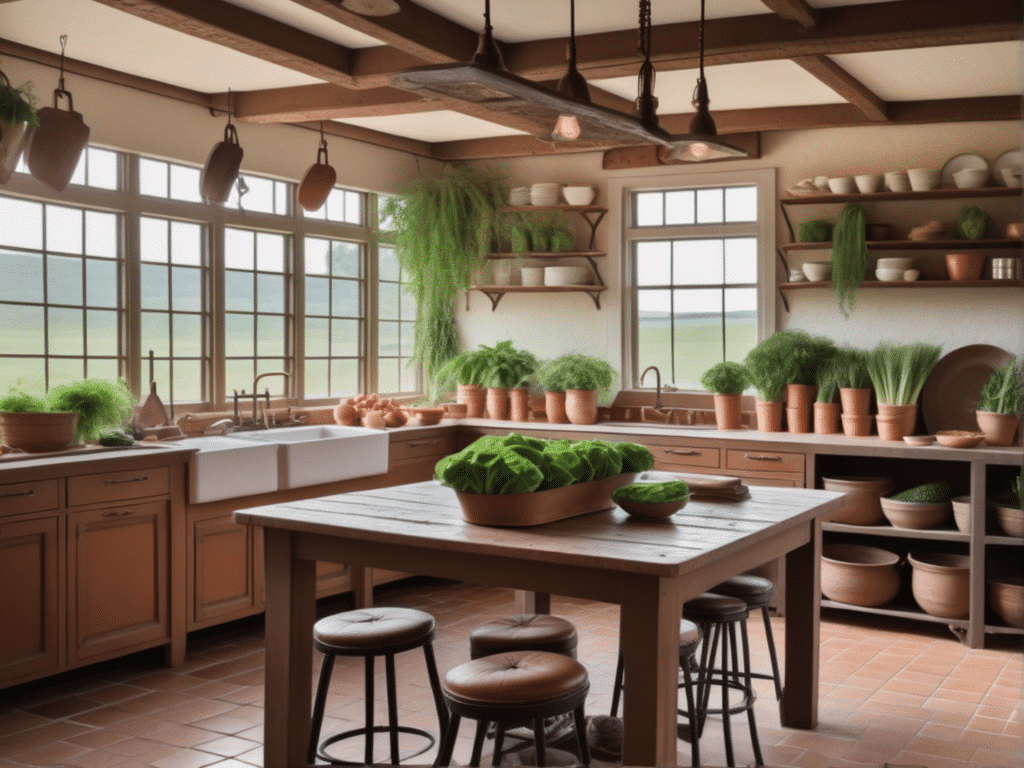
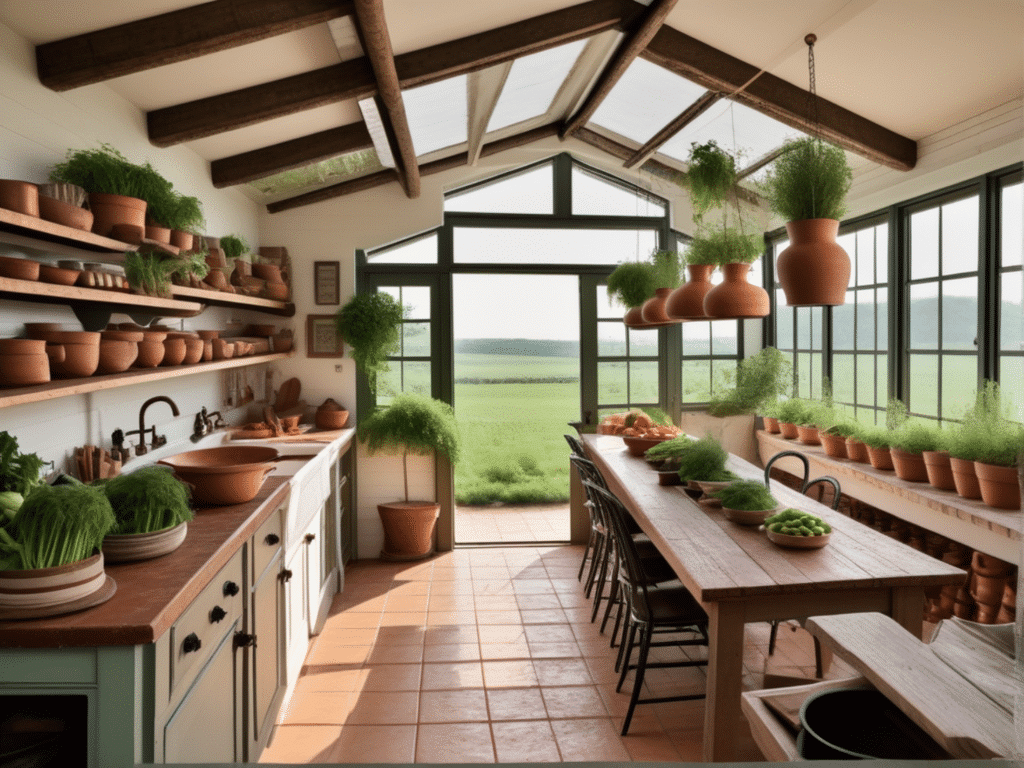
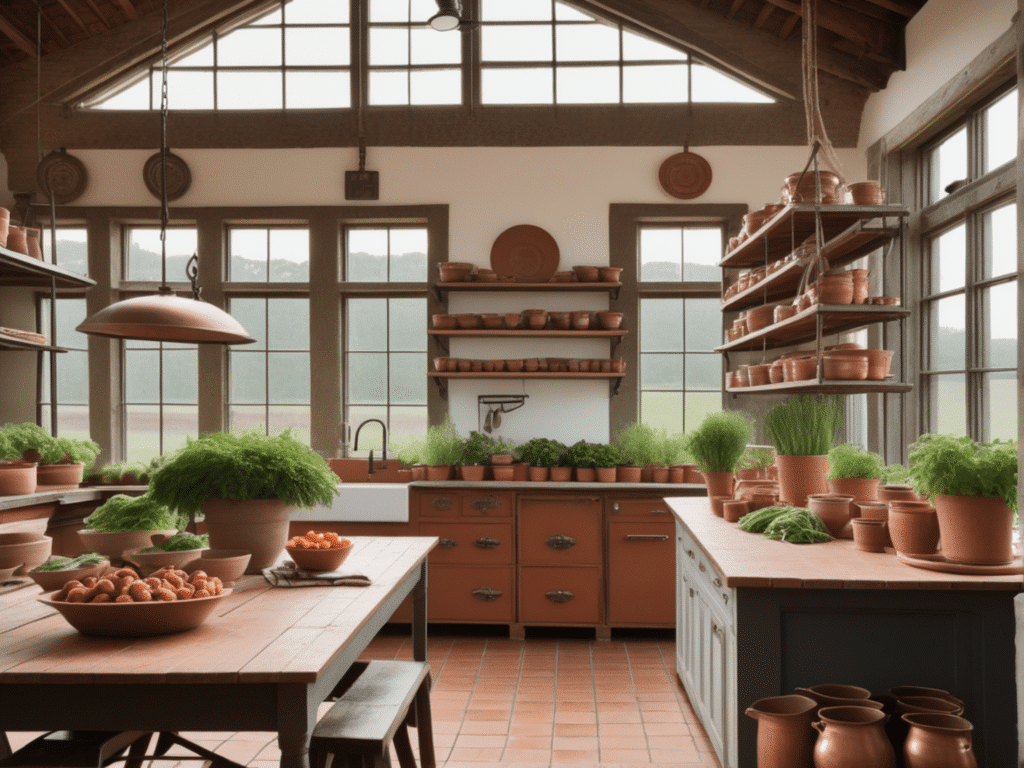
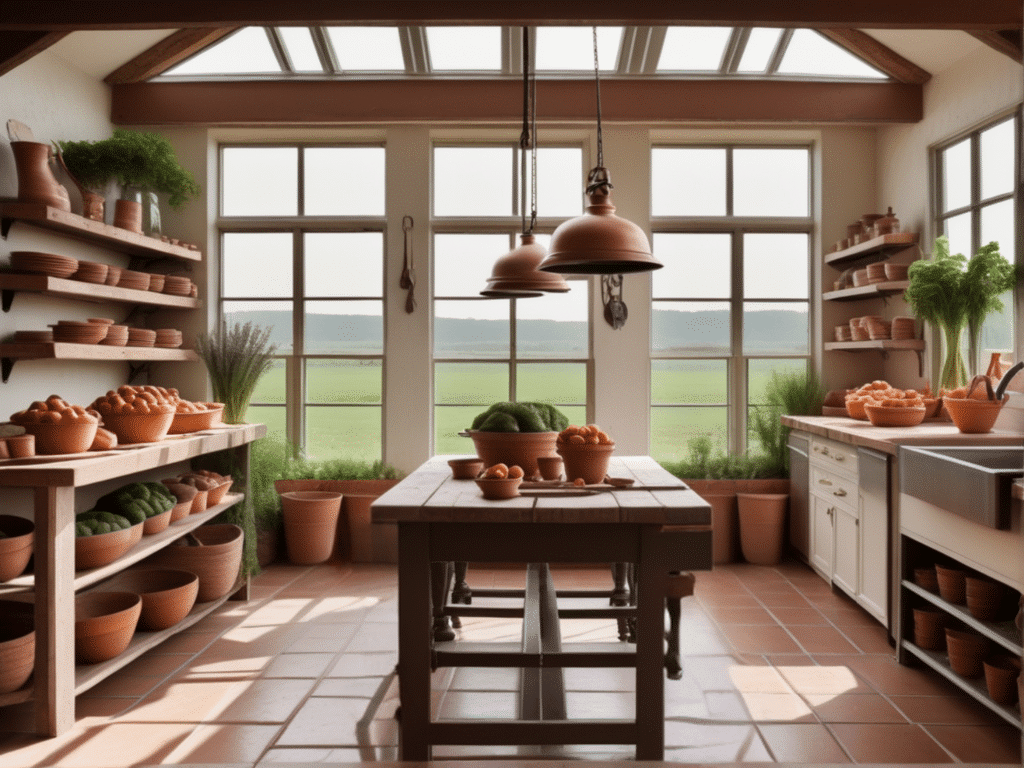

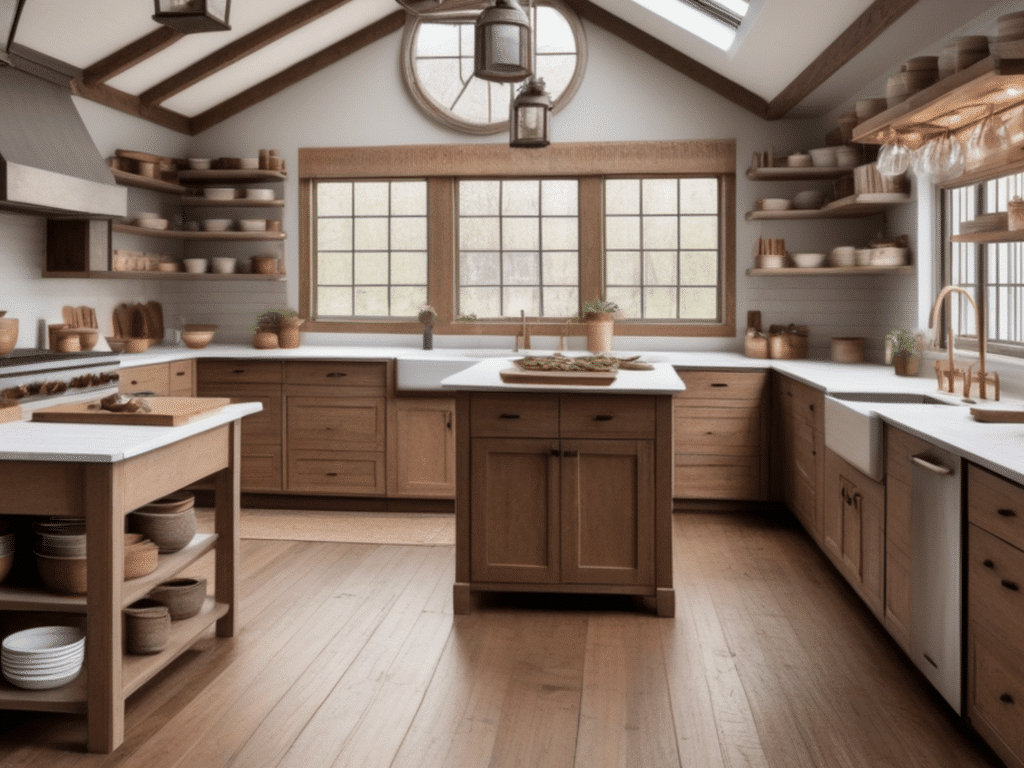

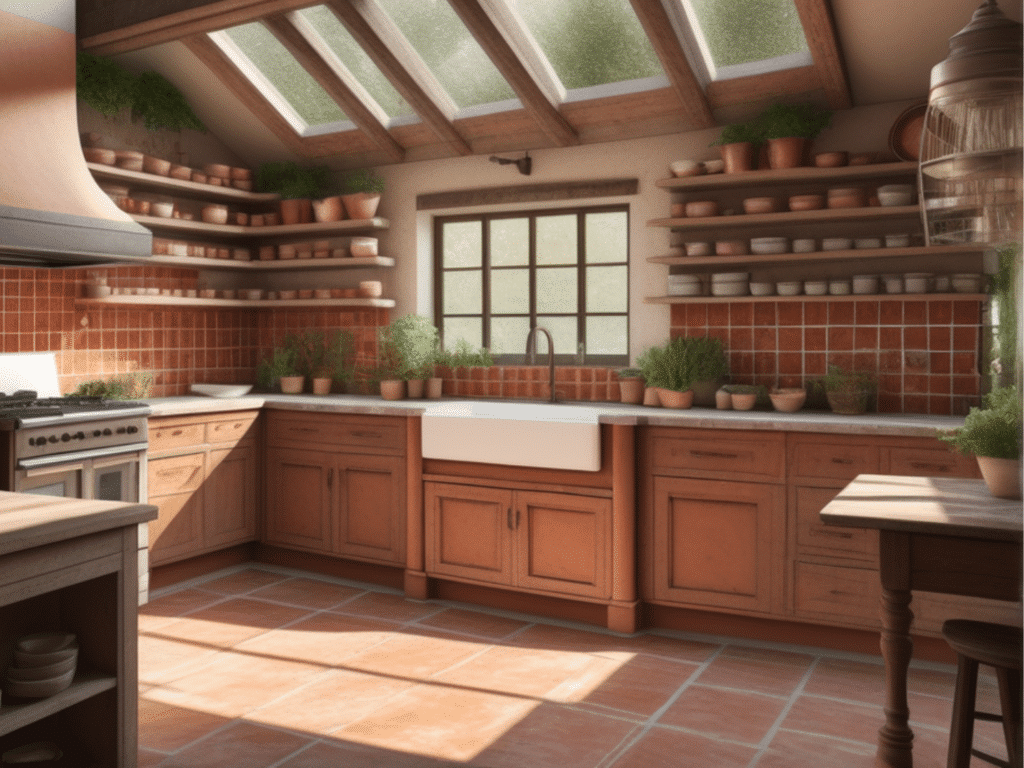
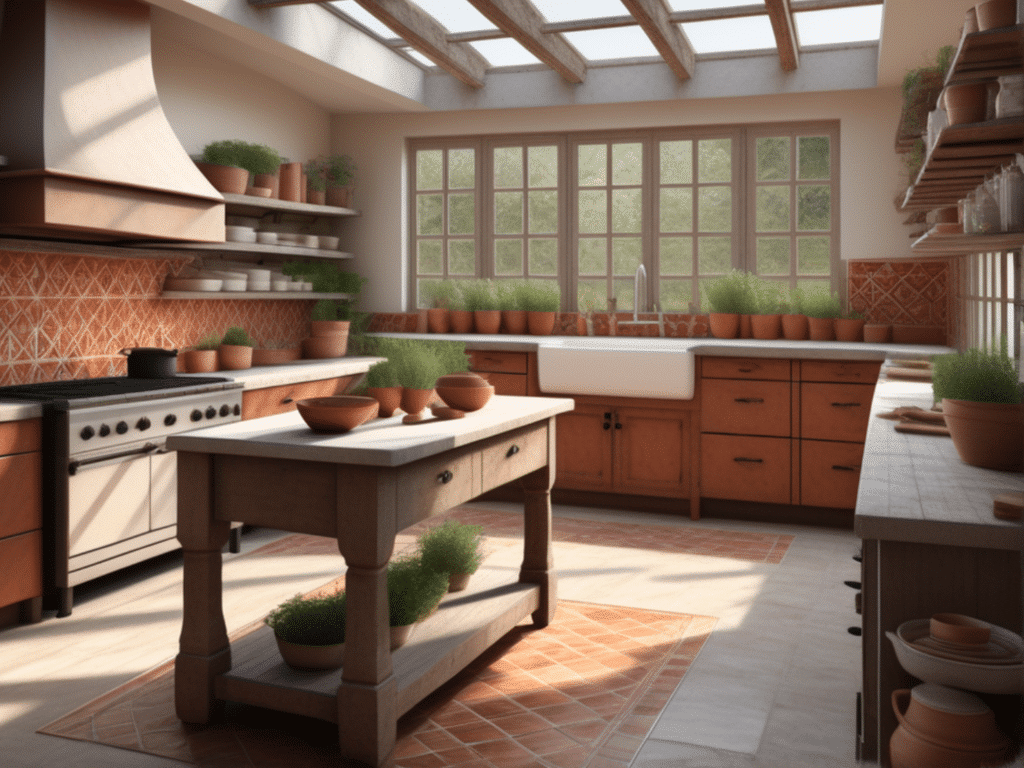
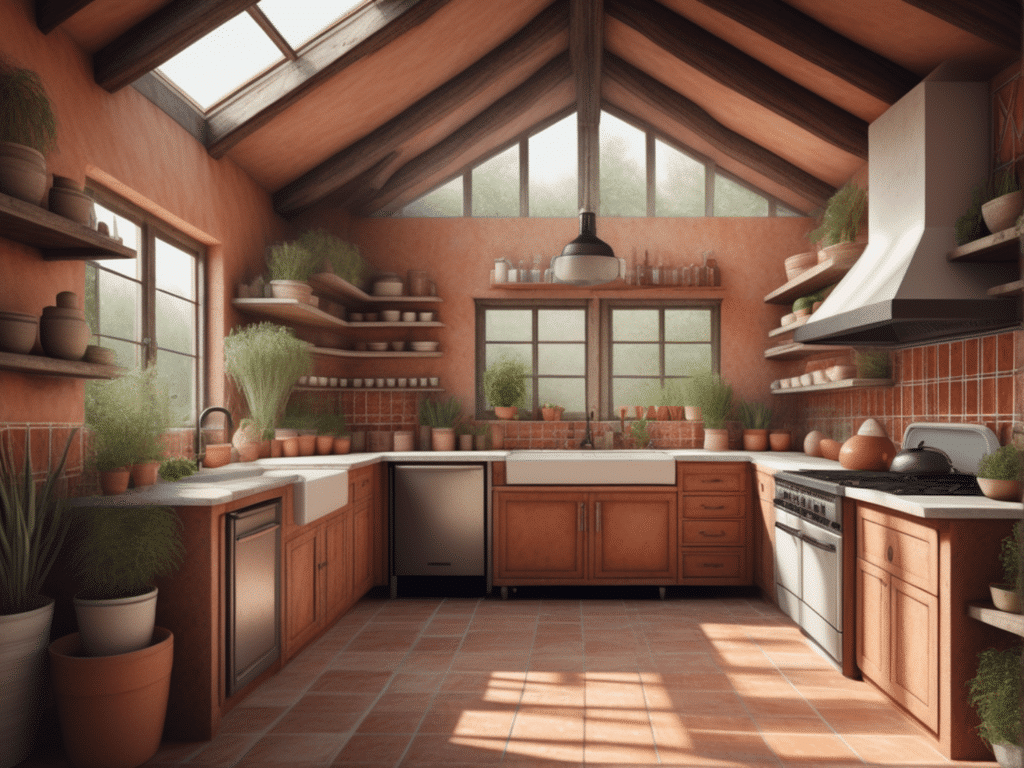
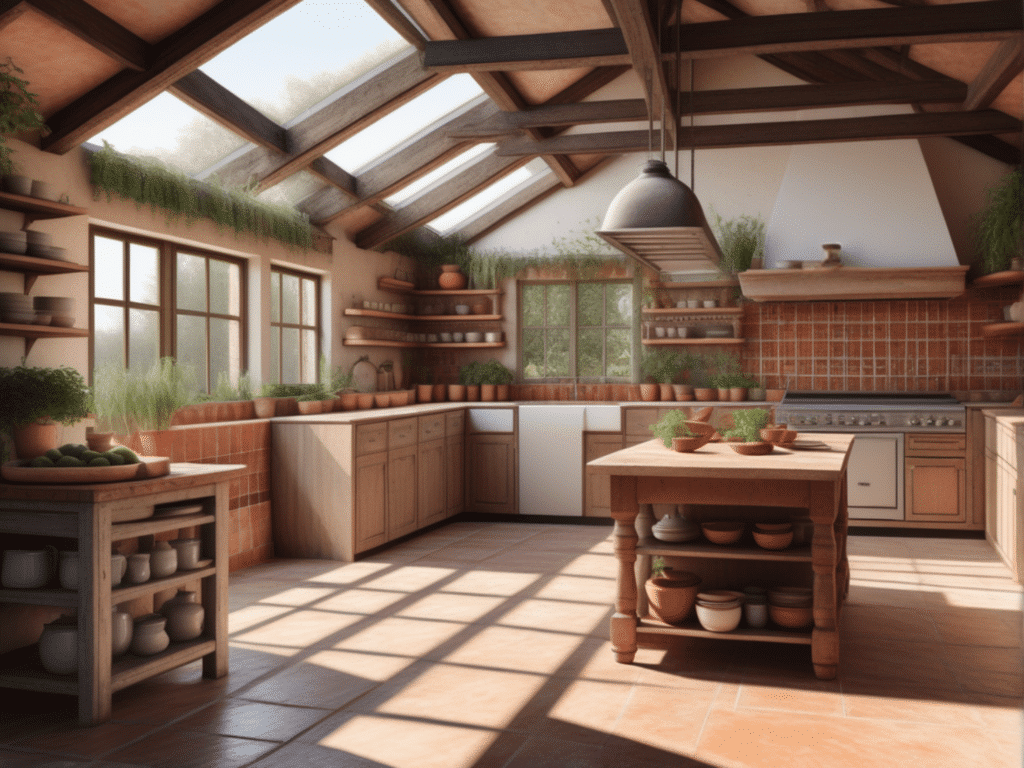
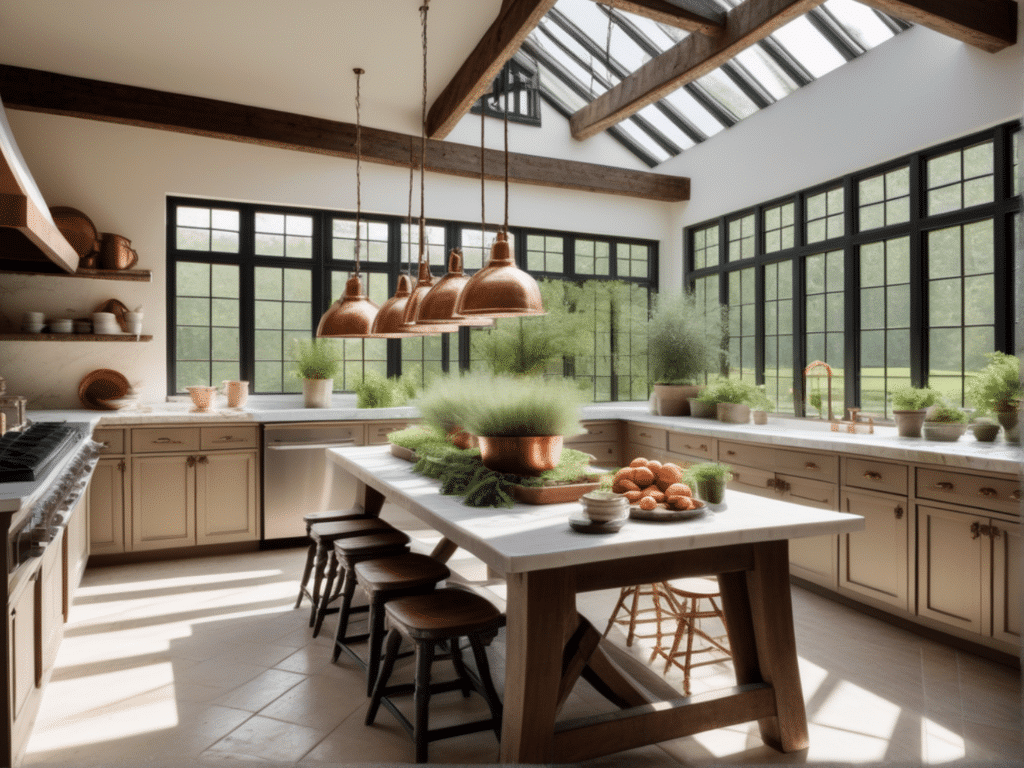

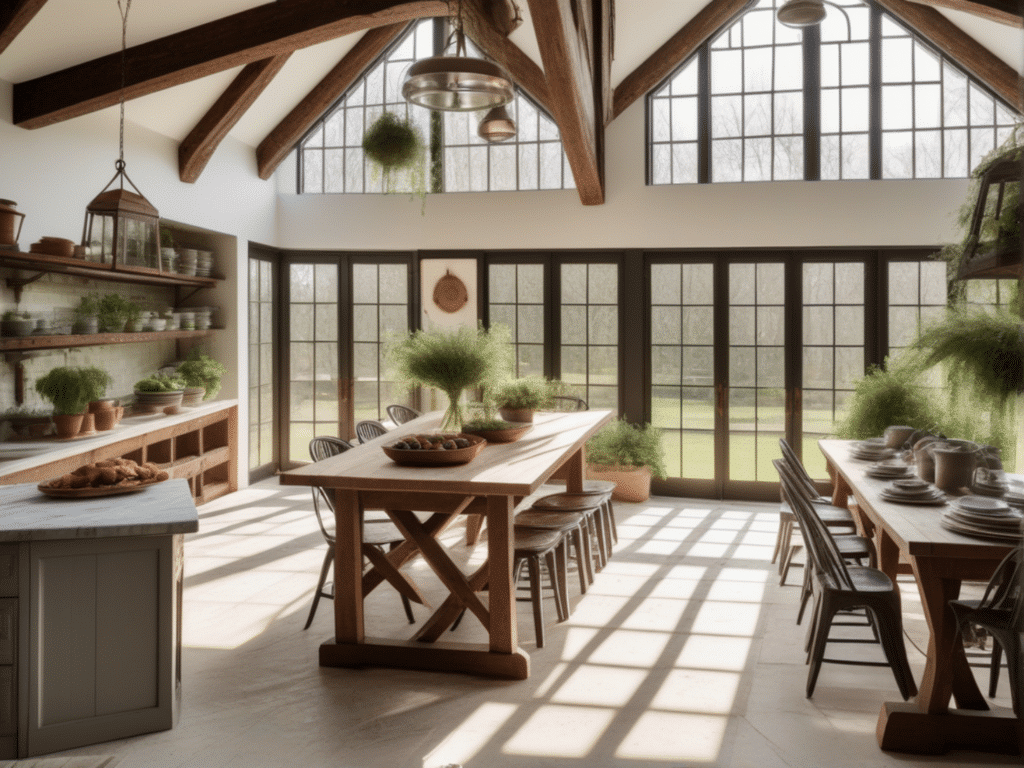
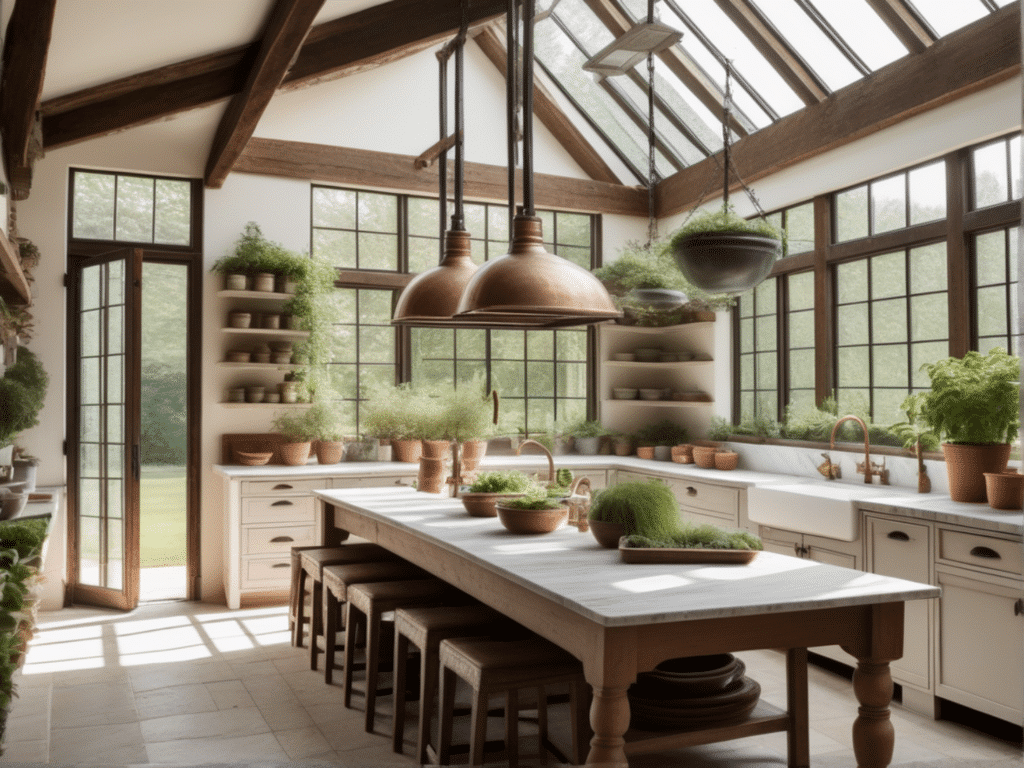
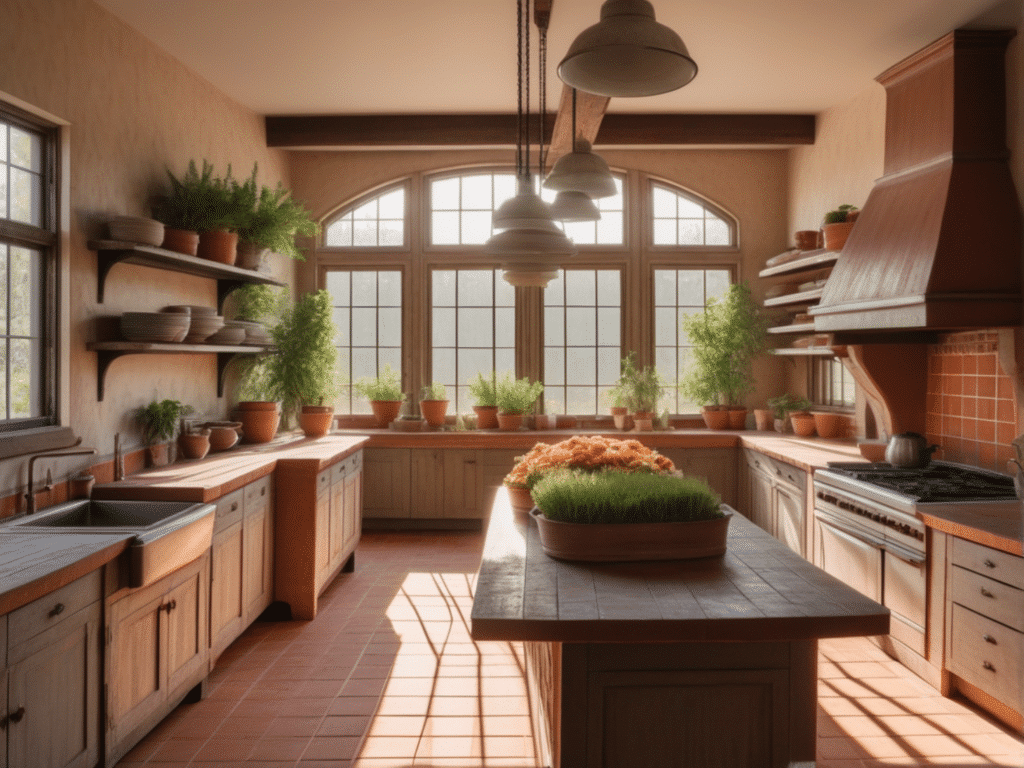

A farmhouse solarium kitchen greenhouse is a valuable addition to any home, offering a unique blend of beauty, functionality, and sustainability. By carefully considering the design and essential elements, you can create a space that not only enhances your home but also supports a healthier, more self-sufficient lifestyle. Whether you’re an experienced gardener or a novice, this versatile space will provide endless opportunities for growth and enjoyment.
